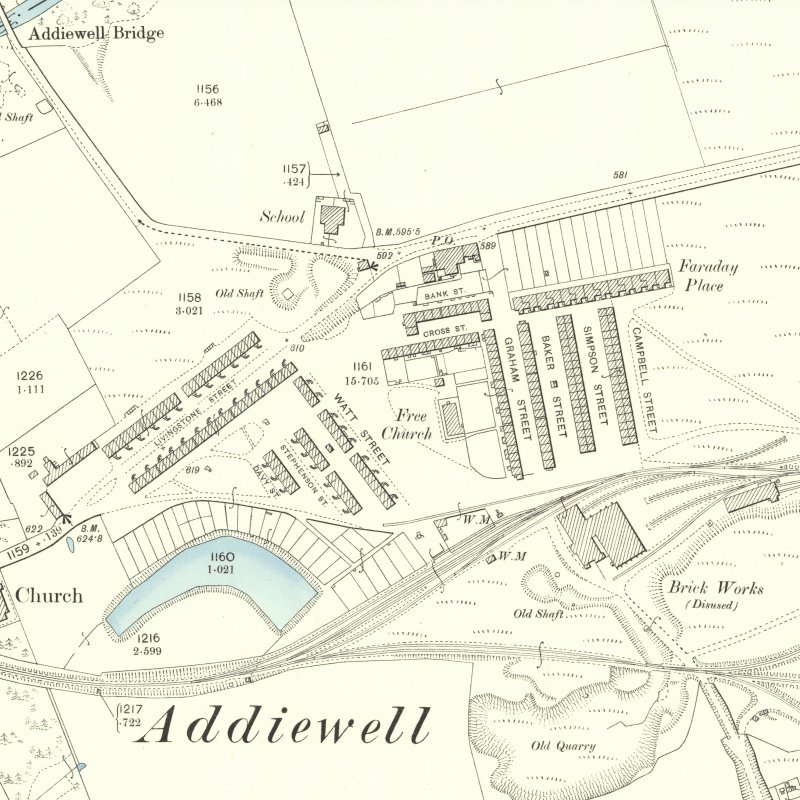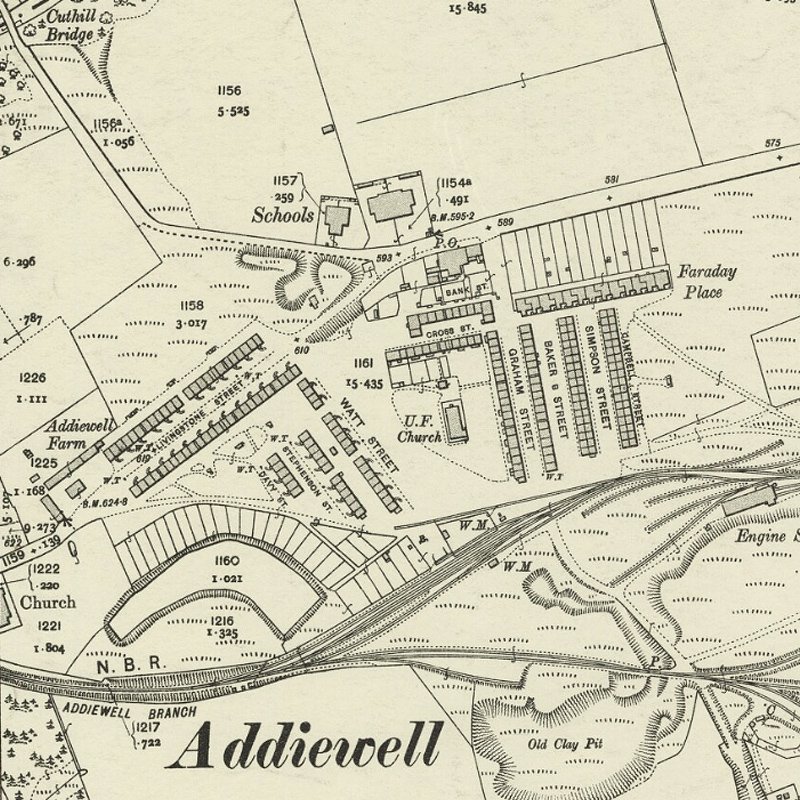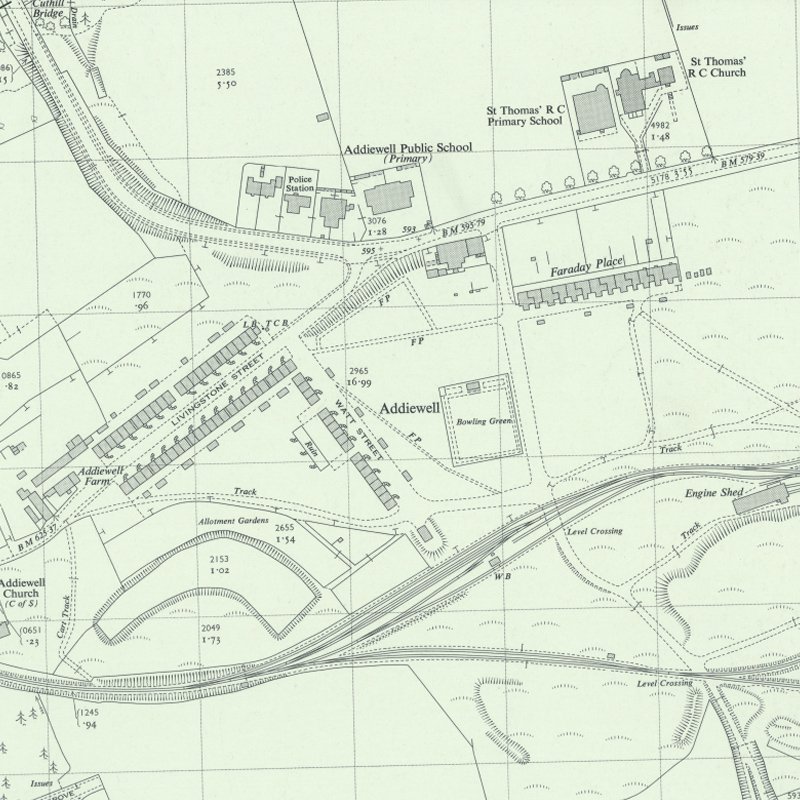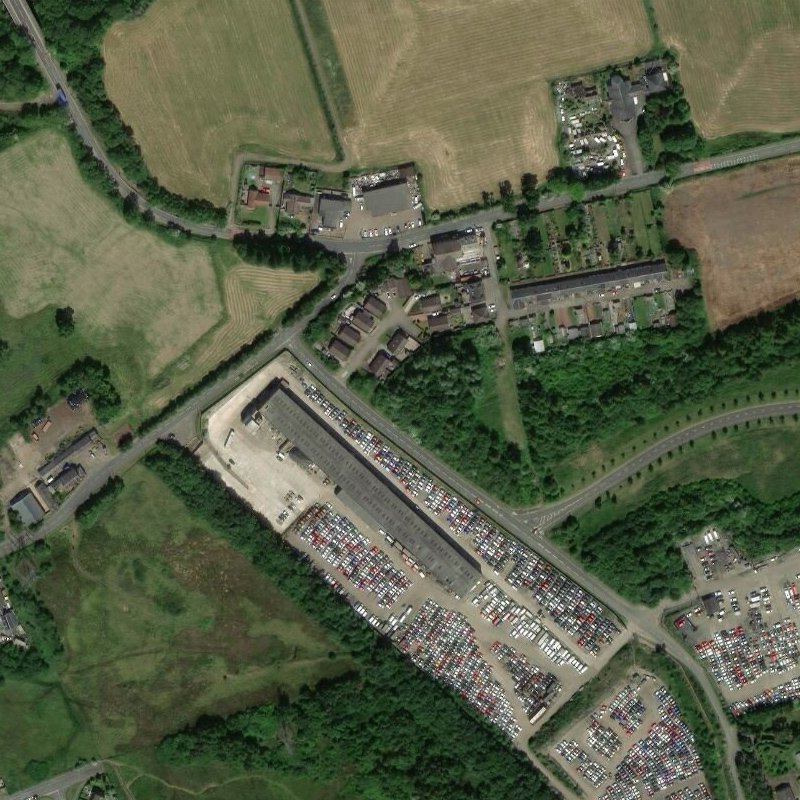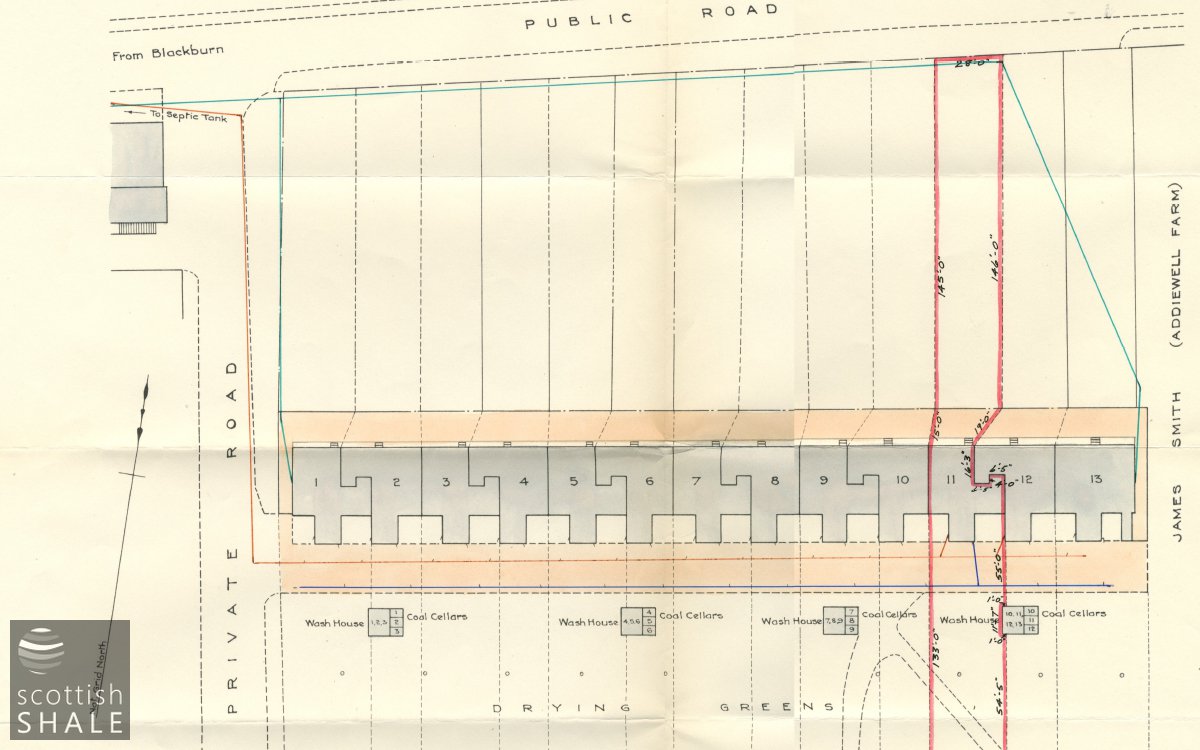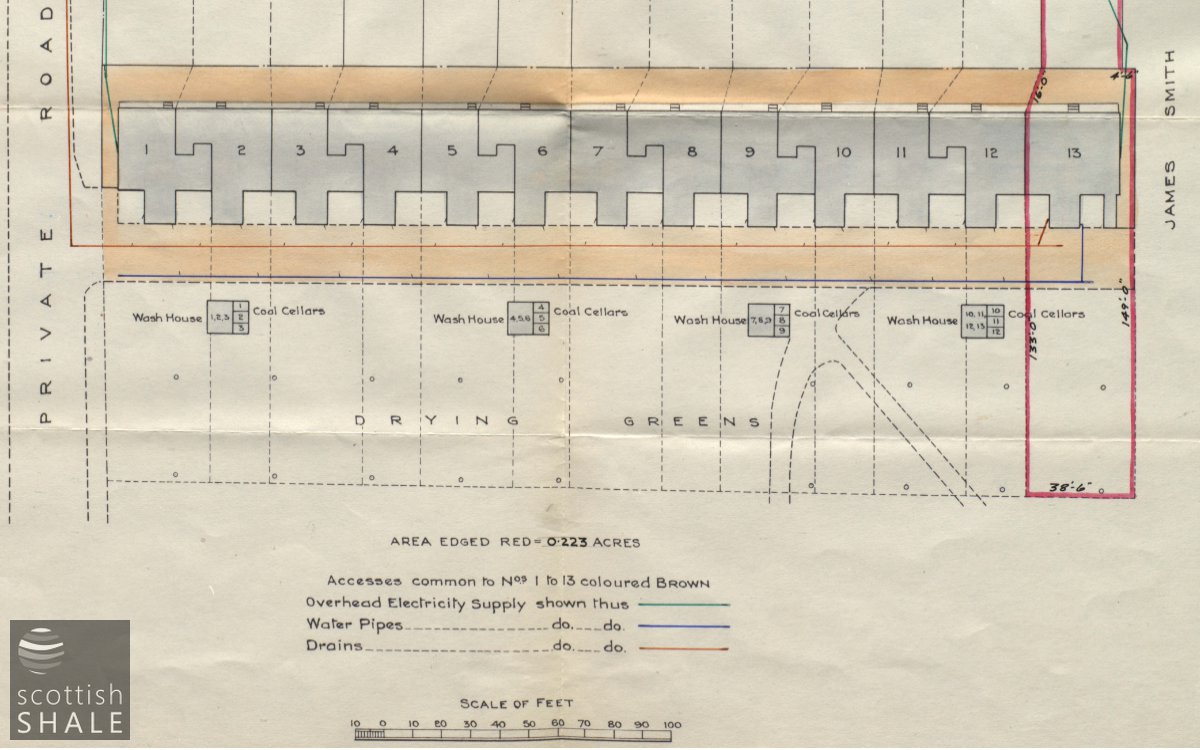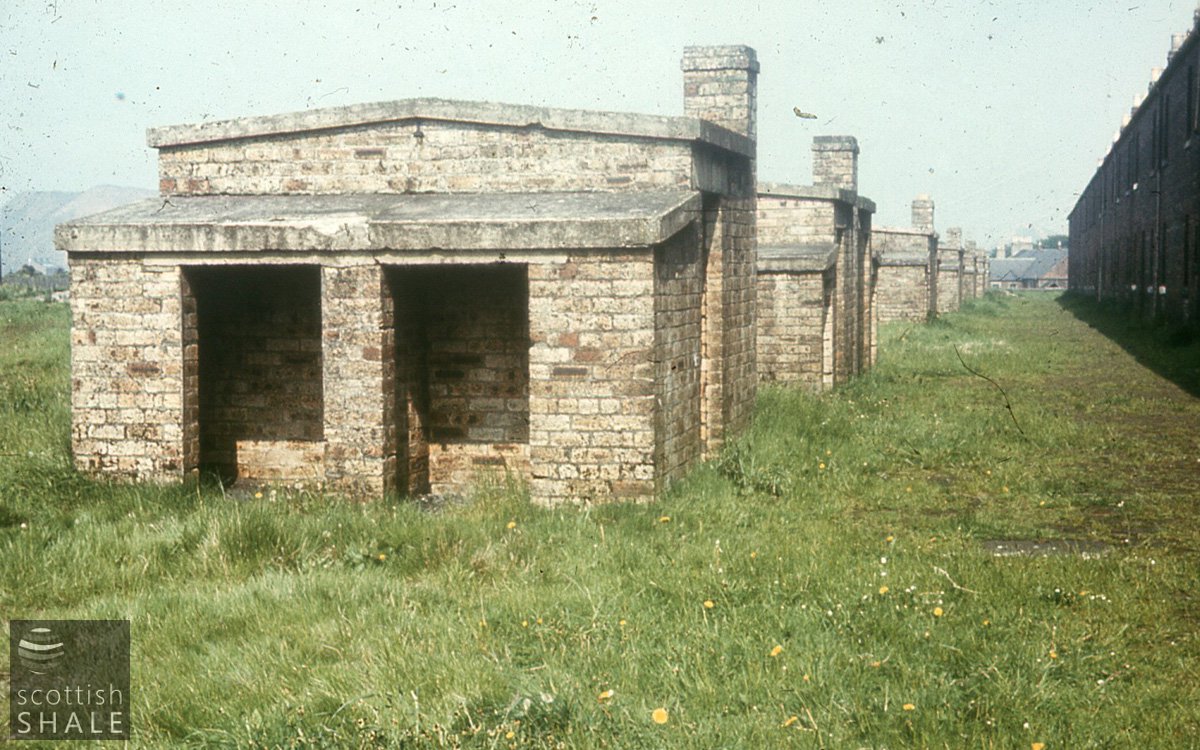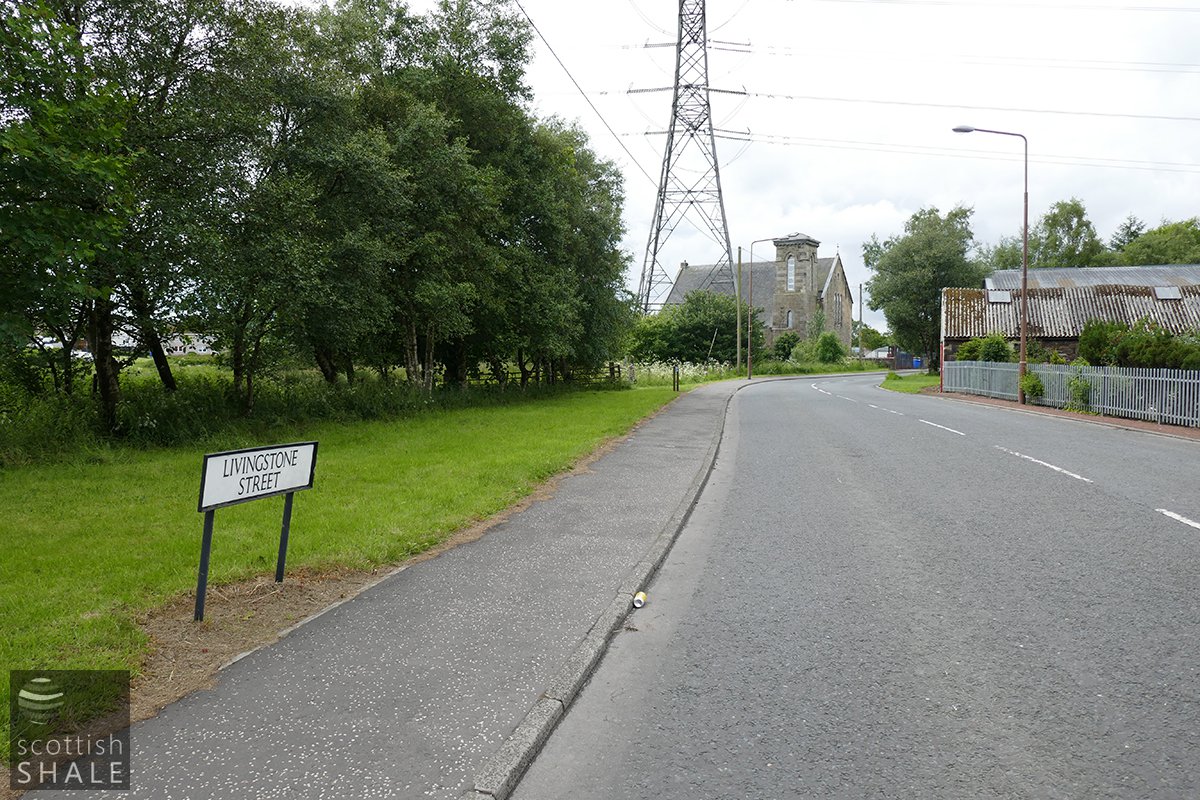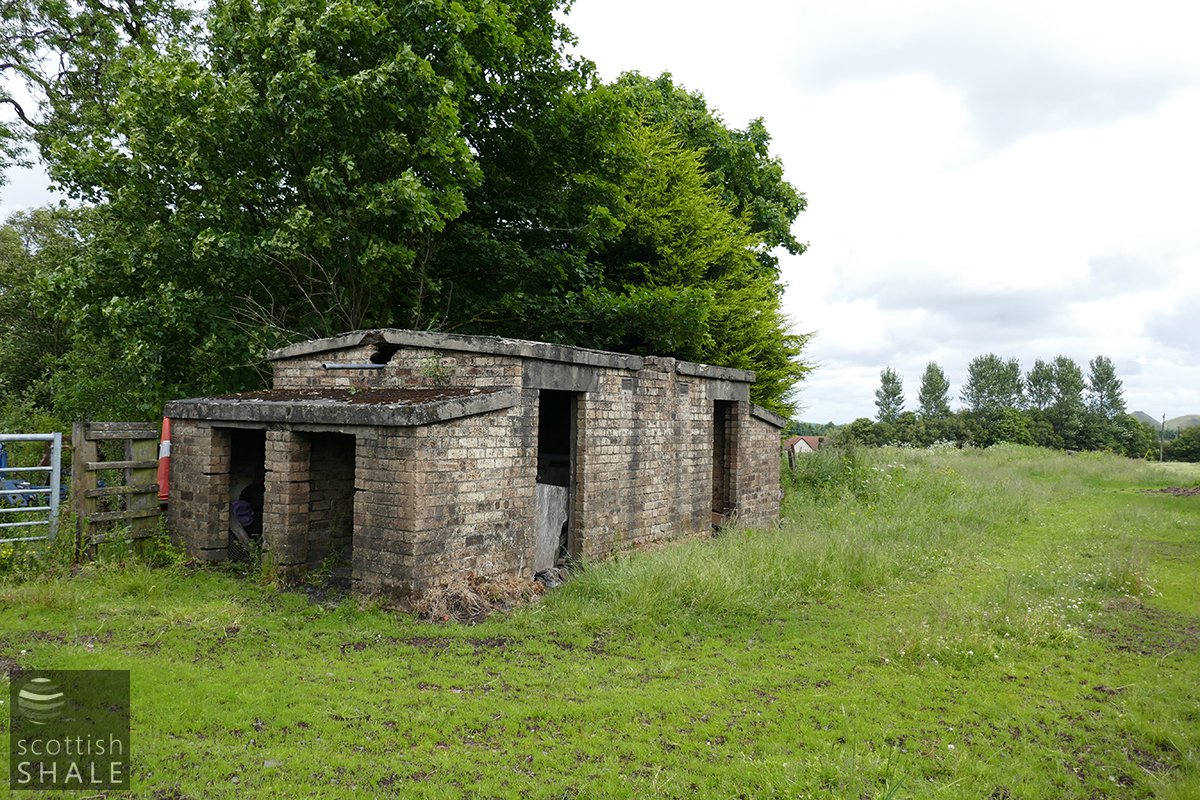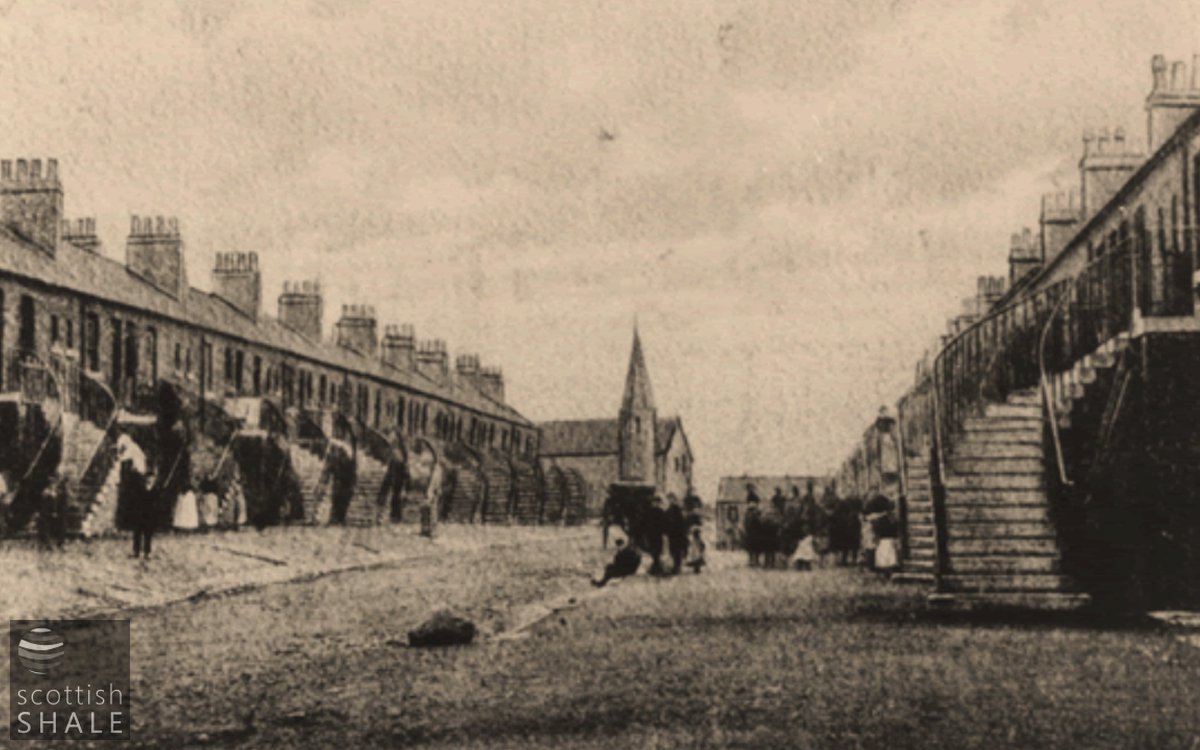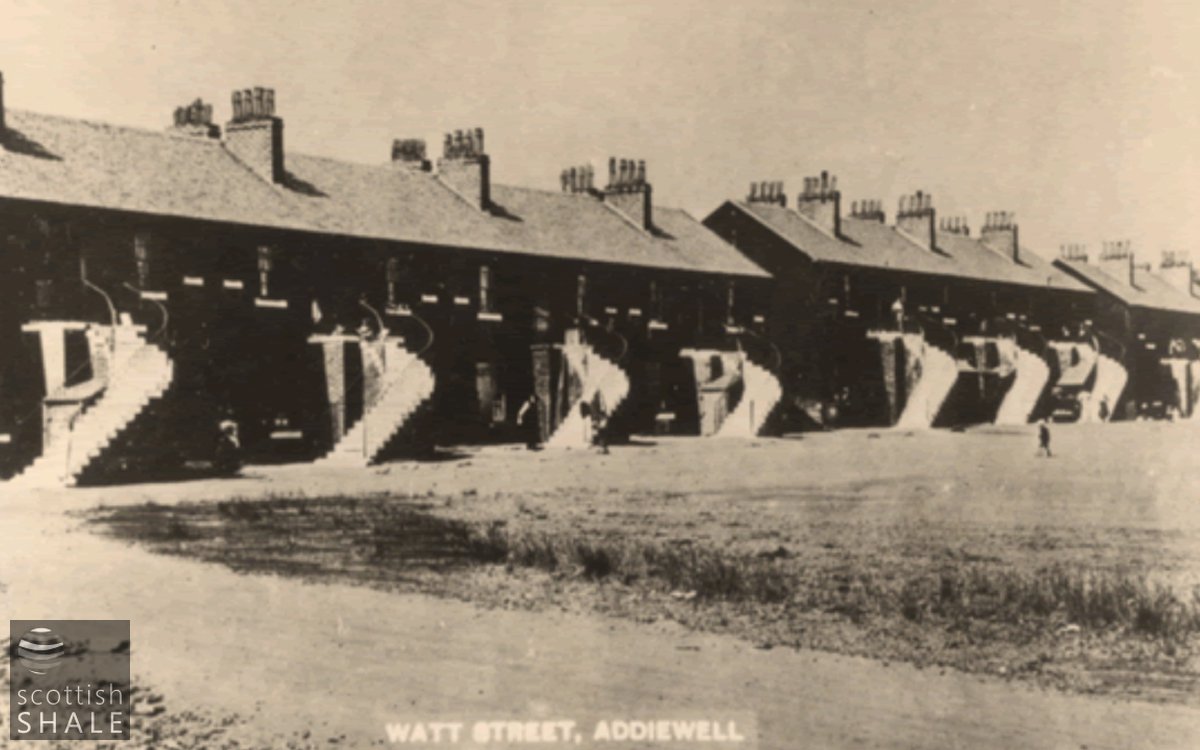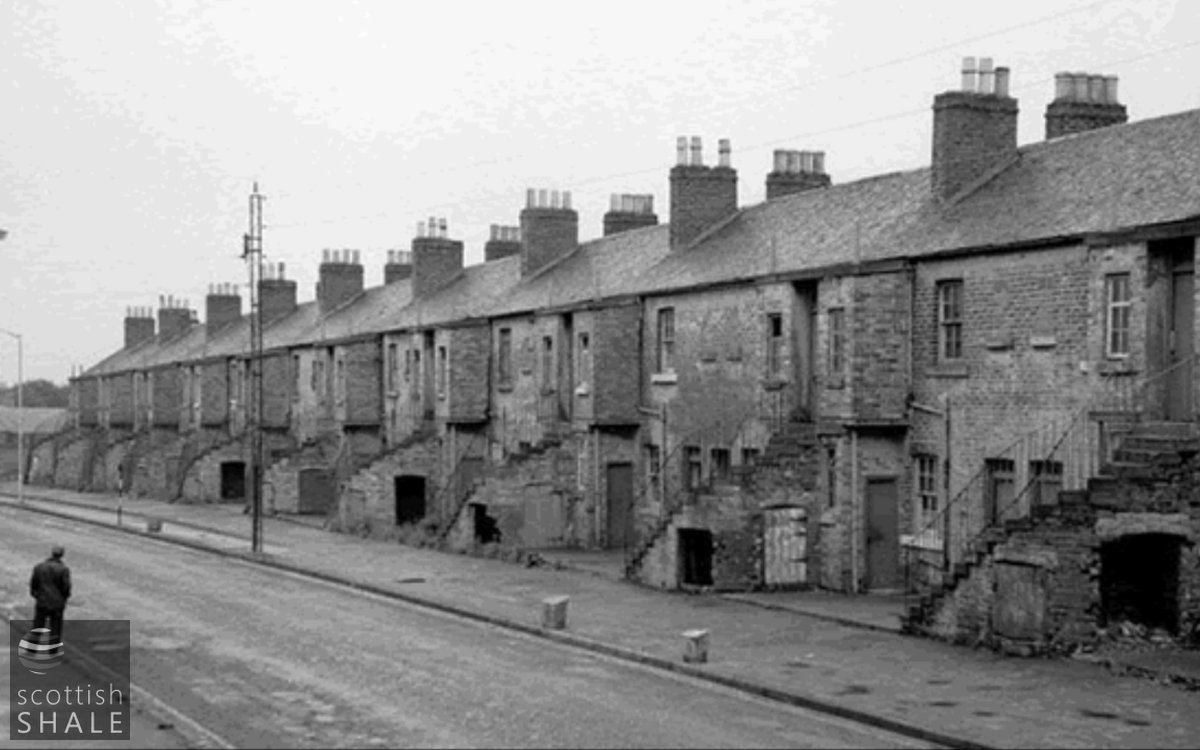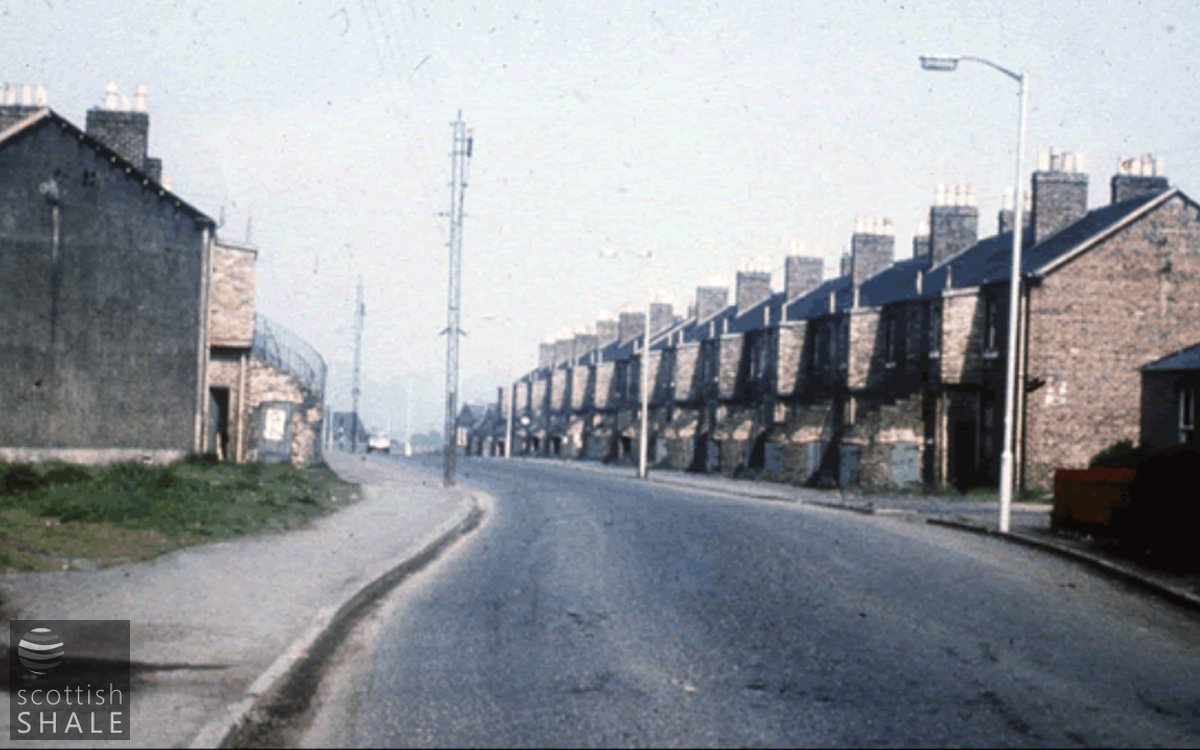- Addiewell village
- Addiewell - Muirhall villas
- Albyn Cottages
- Binnend village
- Bridgend Rows
- Broxburn Rows
- Broxburn - Steele's Rows
- Broxburn - villas
- Burngrange Cottages
- Burnside Cottages
- Cobbinshaw North village
- Cobbinshaw South village
- Dalmeny Rows
- Deans Cottages
- Dedridge Cottages
- East Hermand (village)
- Forkneuk Road, Uphall
- Gavieside village
- Gerson Park
- Greendykes Cottages
- Happy Land
- Hartwood Row
- Hermand New Rows
- Hermand Old Rows
- Holmes Cottages
- Holmes Rows
- Holygate
- Kingscavil Rows
- Kipsyke huts
- Livingston Station village
- Loaninghill Coattages
- Lochend cottages
- Straiton - Meadow Bank cottages
- Mid Breich Rows
- Midcalder - Penny's Buildings
- Middleton Hall - housing
- Mossend village
- Murchison Buildings
- New Holygate
- Newton Cottages
- Niddry Rows
- Oakbank village
- Oakbank Cottages, Westwood
- Redcraig cottages - Oakbank
- Straiton - Pentland Rows
- Philpstoun - The Avenue
- Philpstoun - Wester Pardovan Rows
- Pumpherston - Erskine Place
- Pumpherston - North Village
- Pumpherston - Pumpherston Road
- Pumpherston - South Village
- Pumpherston - Uphall Station Road
- Raeburn Rows
- Redhouse Cottages
- Roman Camp village
- Rosebery Cottages
- Seafield Rows
- Stable Rows
- Starlaw Rows
- Stewartfield Rows
- Straiton - Oakbank Cottages
- Tarbrax (village)
- Uphall Station Rows
- Uphall Station - Beechwood
- Uphall Station - Office Rows
- Uphall Station - Stankard Rows
- West Calder - Union Street & "Dalveen"
- Westerton Rows
- Westfield Rows
- Westwood (old rows)
- Winchburgh village
- Woolfords (new rows)
- Woolfords (old rows)
Addiewell village
A substantial new town created to house the workforce of Addiewell Chemical Works.
Evidence presented to the Royal Commission on Housing Conditions on 25th March 1914 stated:
"In the village there are some 360 houses built of brick, in rows and tenements. There are some 70 single-apartment houses, and about 290 two-apartment houses. No wash-houses are provided for any of the tenants, and 90 have no coal-cellars. The size of single apartments is 14 feet 10 inches by 12 feet; height 8 feet 10 inches. In two-apartment houses the kitchen measures 13 ft by 11 ft, and the room 9.5 ft by 11 ft; height 8 ft 7 inches in some houses, in others the height measures 9 feet 3 inches. A number of houses have gardens. For about 300 houses there are only twelve privies of a most objectionable character. Ash-pits are provided, but they are built from about 15 to 20 yards from the houses, and as can readily be imagined, they are a positive pestilence in the summer time, and at all times a danger to the health of the community. Clothes poles are studded here and there in the back courts. Water is procured from some seventeen stand-pipes, and the sewage flows down by open channels. The sanitary conditions generally existing are bad in the extreme. The rental is 2/4 per week for double- and 1/6. per week for single-apartment houses, inclusive of local and county rates. The houses are occupied principally by the oilworkers. An Institute with library and reading room is provided, also room for games, for which the workers are charged 1d. per week. The houses are owned by Messrs. Young's Oil Company. In Addiewell district there are some 650 houses, with a population of 2100 persons."
Initially Addiewell was exclusively for oil workers, and staff employed in Young's mines were housed some distance away at Happy Land and other settlements. Many of Addiewell's streets were named after famous Victorian inventors and public figures.
- Livingstone Street, named after David Livingstone, contained 100 houses in two-storey terraced blocks either side of the road. Built prior to 1871 and demolished c. 1967
- Watt Street, named after James Watt, contained 33 houses in two-storey terraced blocks. Built prior to 1871 and demolished c. 1967
- Stephenson Street, named after Robert Stephenson, contained about 24 homes in two-storey terraced blocks. Built prior to 1871 and demolished during the 1930's or 40's
- Davy Street, named after Humphrey Davy, consisted of a single two storey block of 12 homes. Built prior to 1871 and demolished during the 1930's or 40's
- Bank Street, about 12 homes, demolished during 1930's or 40's
- Cross Street, about 13 homes, demolished during 1930's or 40
- Graham Street, with about 19 homes of two-apartment homes either side of the street
- Baker Street, consisting of 18 single apartment homes built back-to-back with Simpson Street. Demolished during the 1930's or 40's
- Simpson Street consisted of a continuous row of about 36 single-storey, single-apartment back-to-back homes on either side of the street. Demolished during the 1930's or 40's
- Campbell Street consisted of a single row of 18 single-storey, mostly single-apartment homes, built back to back with Simpson Street. demolished during the 1930's or 40's
- Faraday Place, named after Michael Faraday, a row of 13 homes for works foremen, mostly with three apartments and substantial garden. Extended and altered, these still provide comfortable homes. This detailed plan, dated 1964, from the BP Archive, shows the layout of Faraday Place.
Addiewell was served by a Cooperative store, a post office, an institute, two churches and two schools.
Archive plans
Archive images
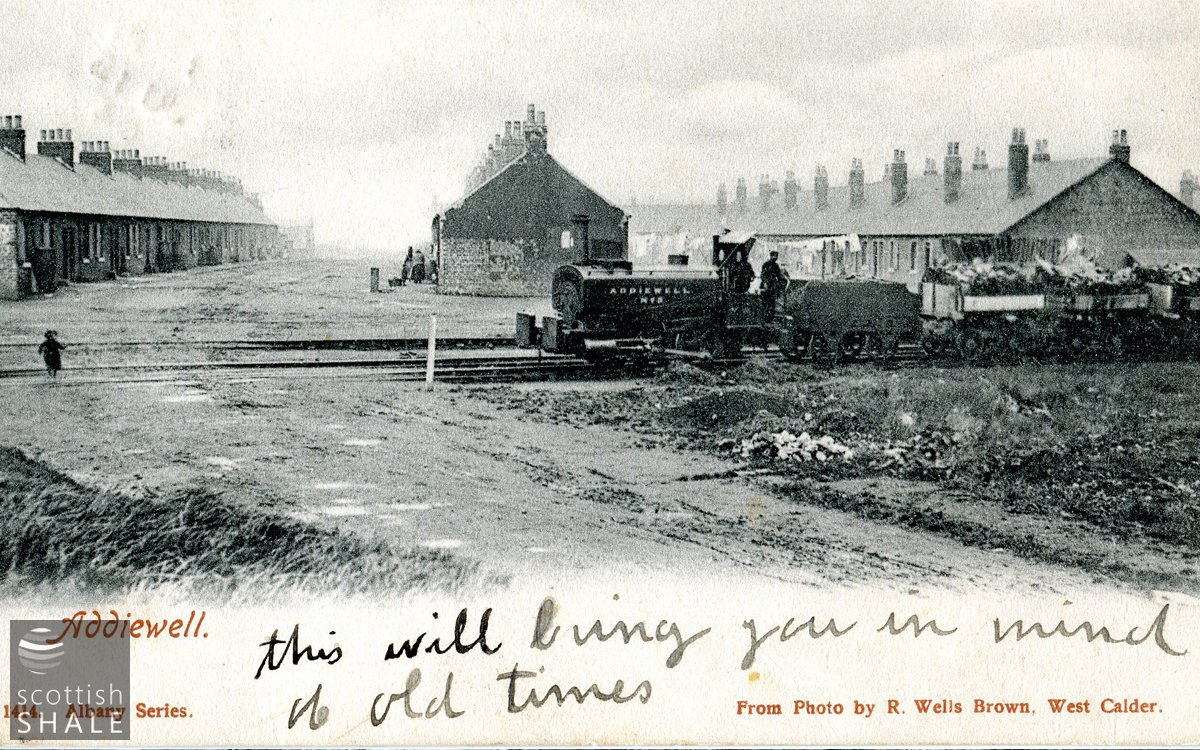
The works pug shunts wagons of shale past Graham Street and Baker Street, from a postcard. Courtesy West Lothian Libraries (S1.084). See full recordLVSAV2013.017
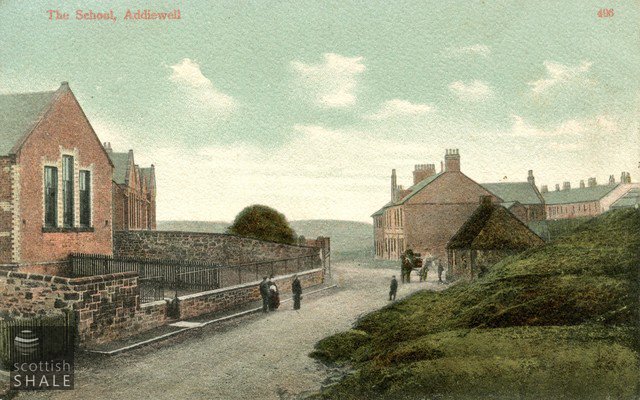
Addiewell School with view towards Co-op store and Cross Street. See full recordLVSAV2011.007
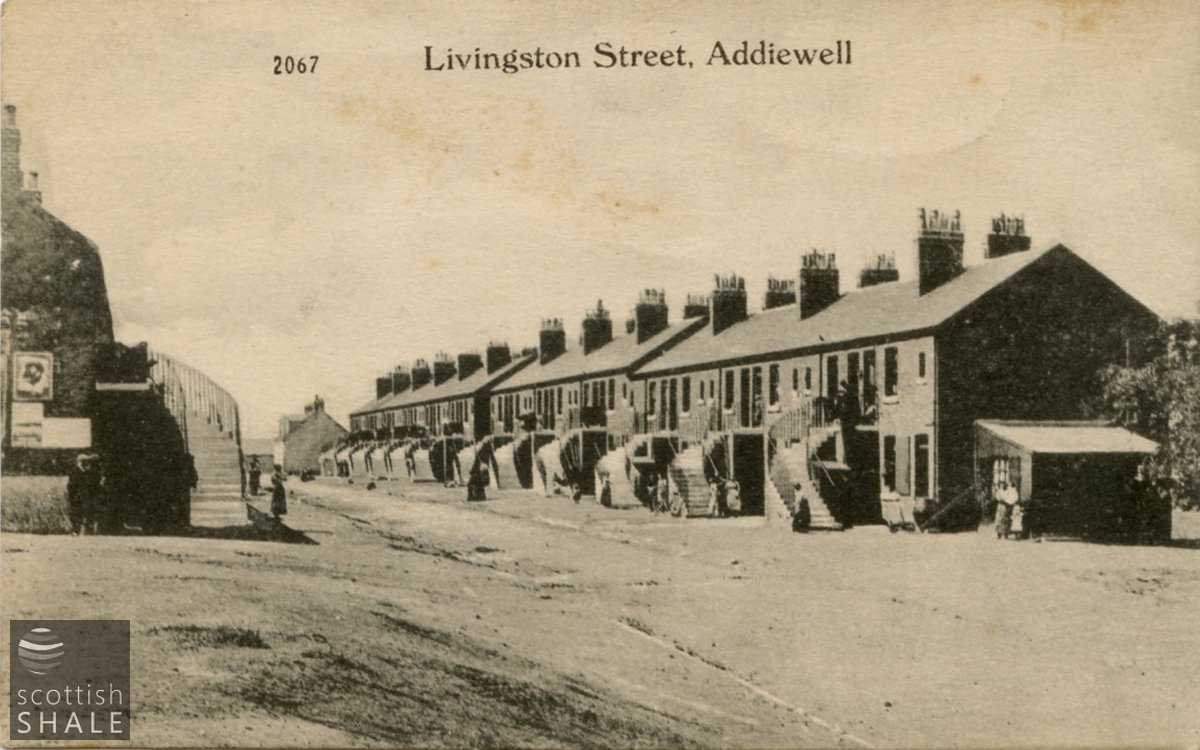
Livingstone Street. See full record LVSAV2018.117
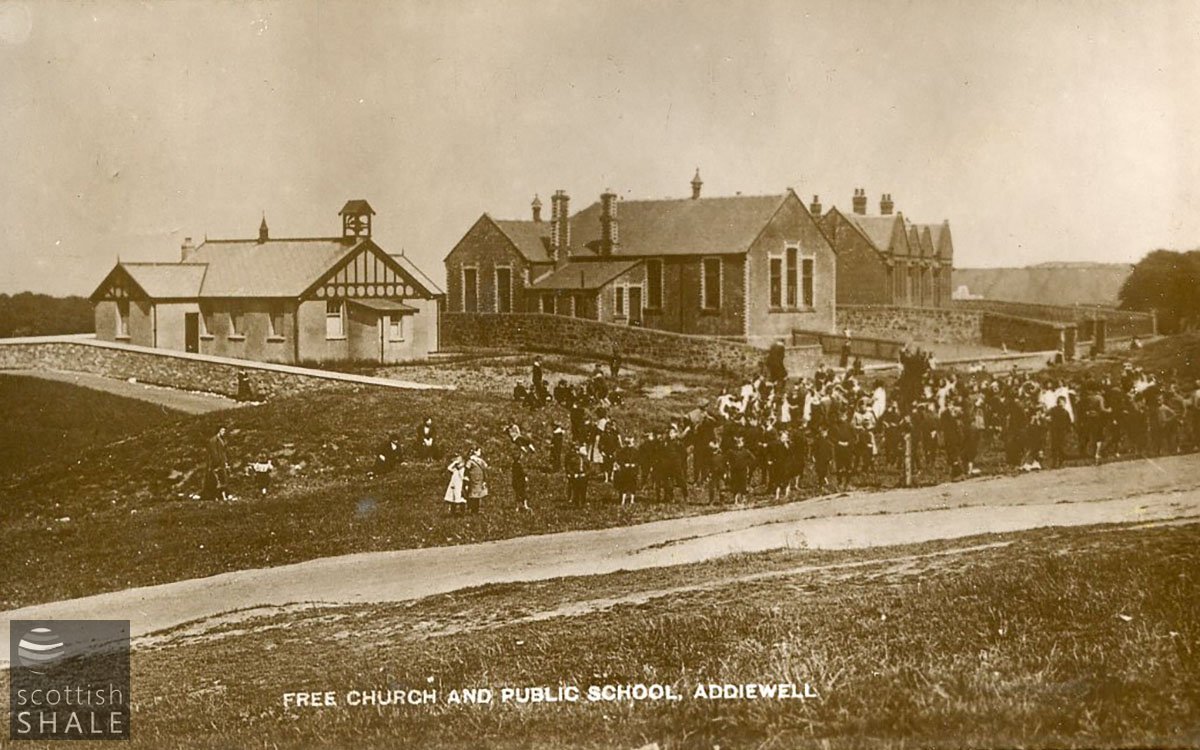
LVSAV2020.022
Recent images
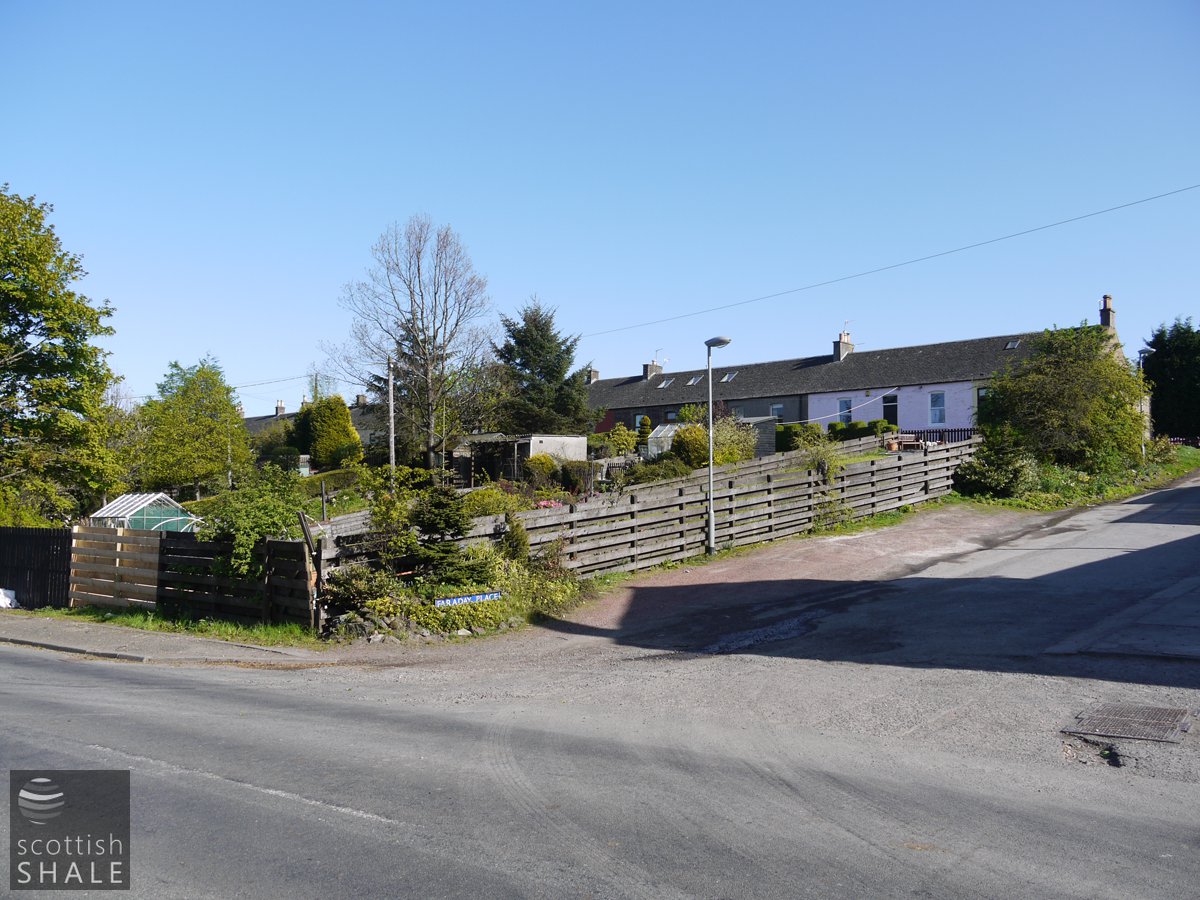
Faraday Place, Addiewell, 30 April 2011
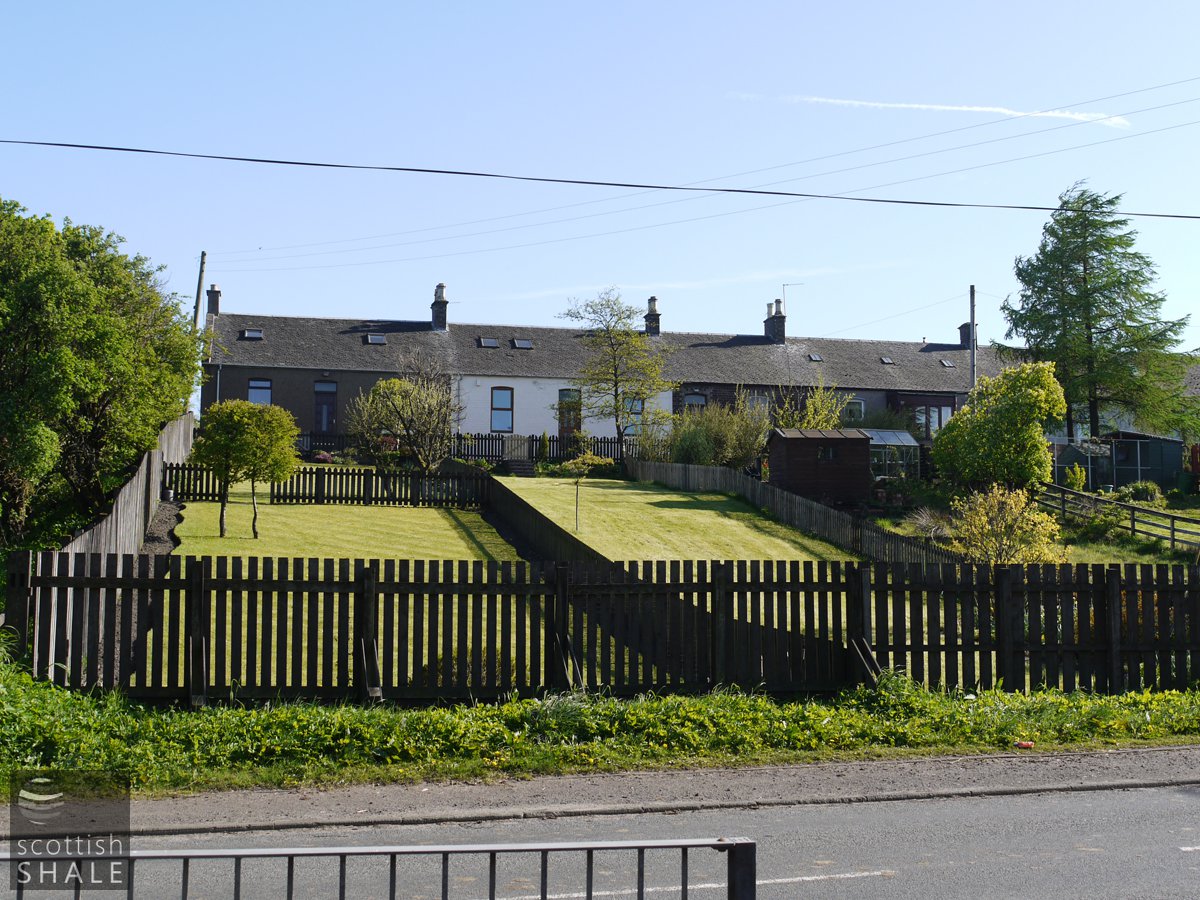
Faraday Place, Addiewell, 30 April 2011
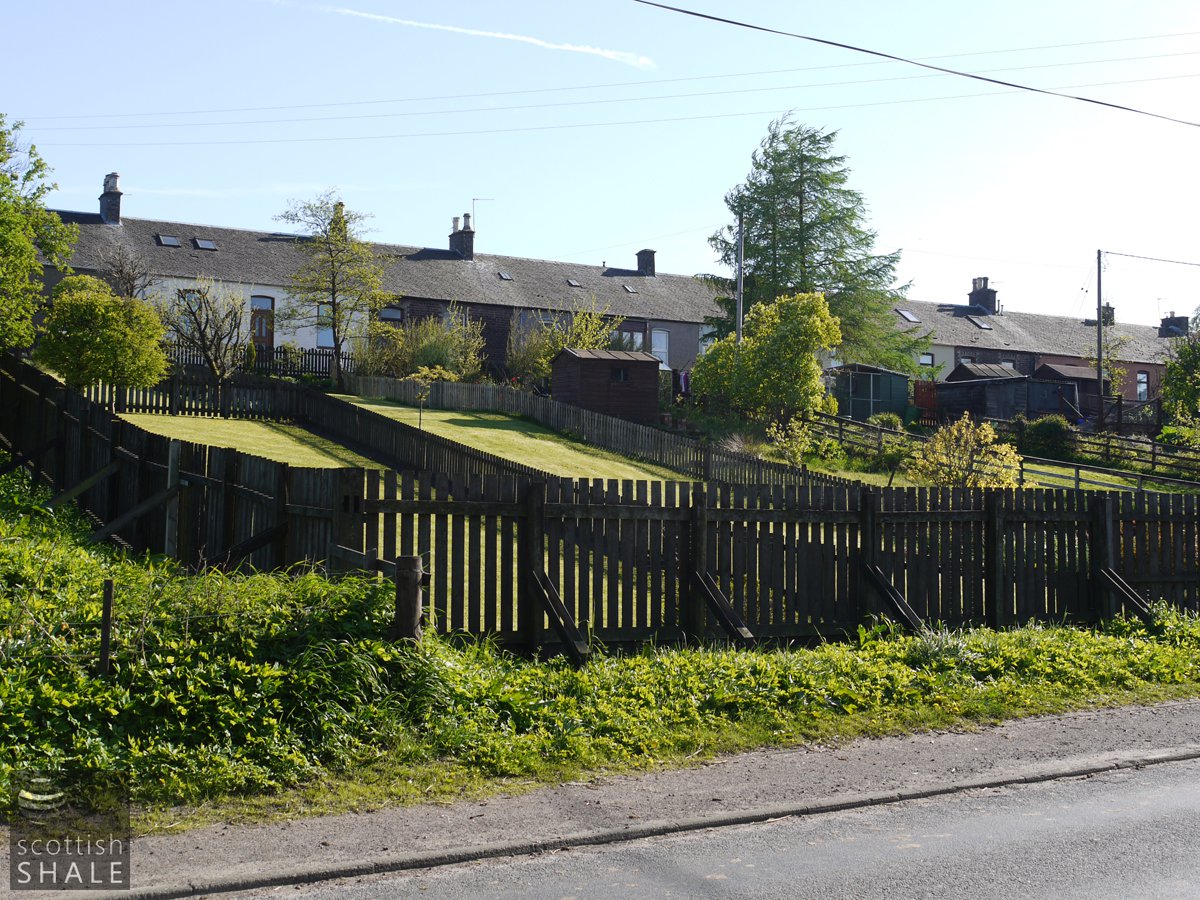
Faraday Place, Addiewell, 30 April 2011
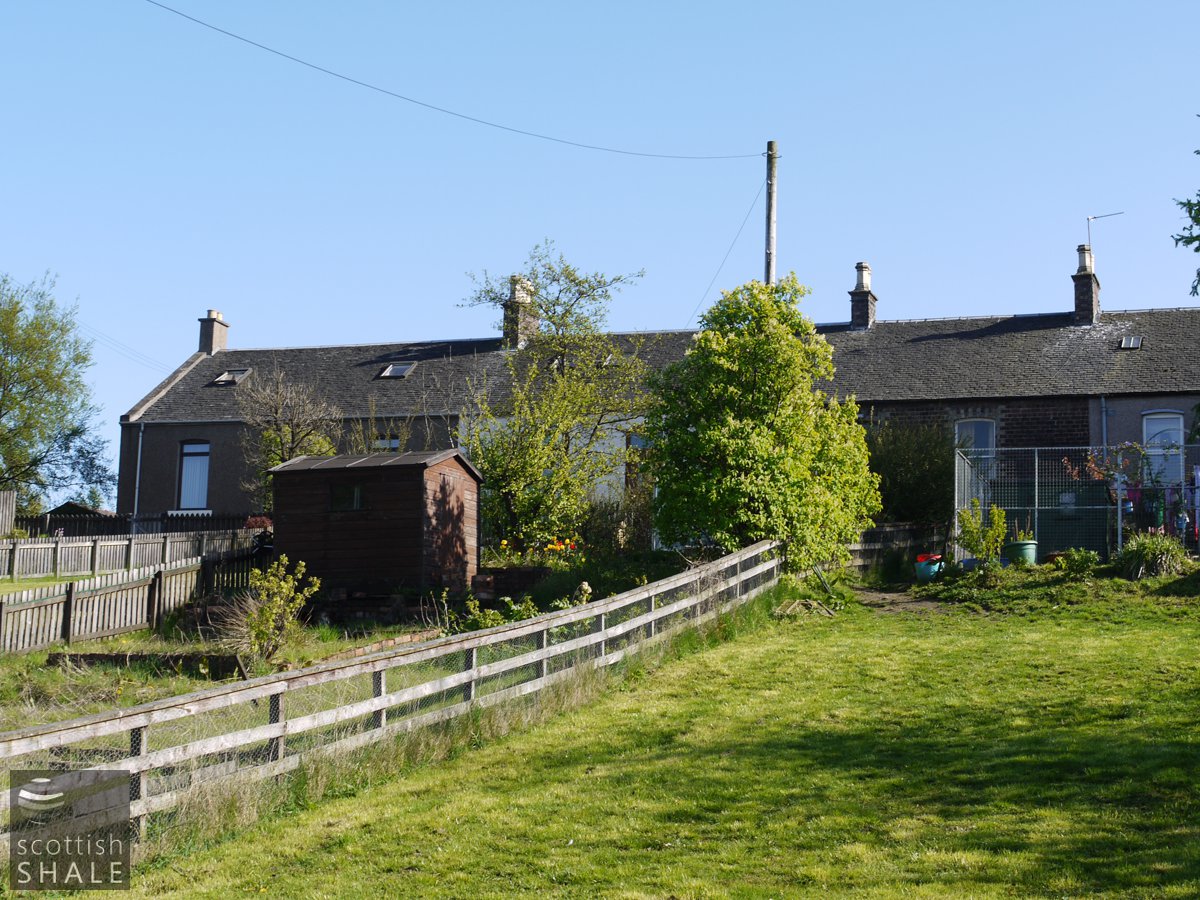
Faraday Place, Addiewell, 30 April 2011
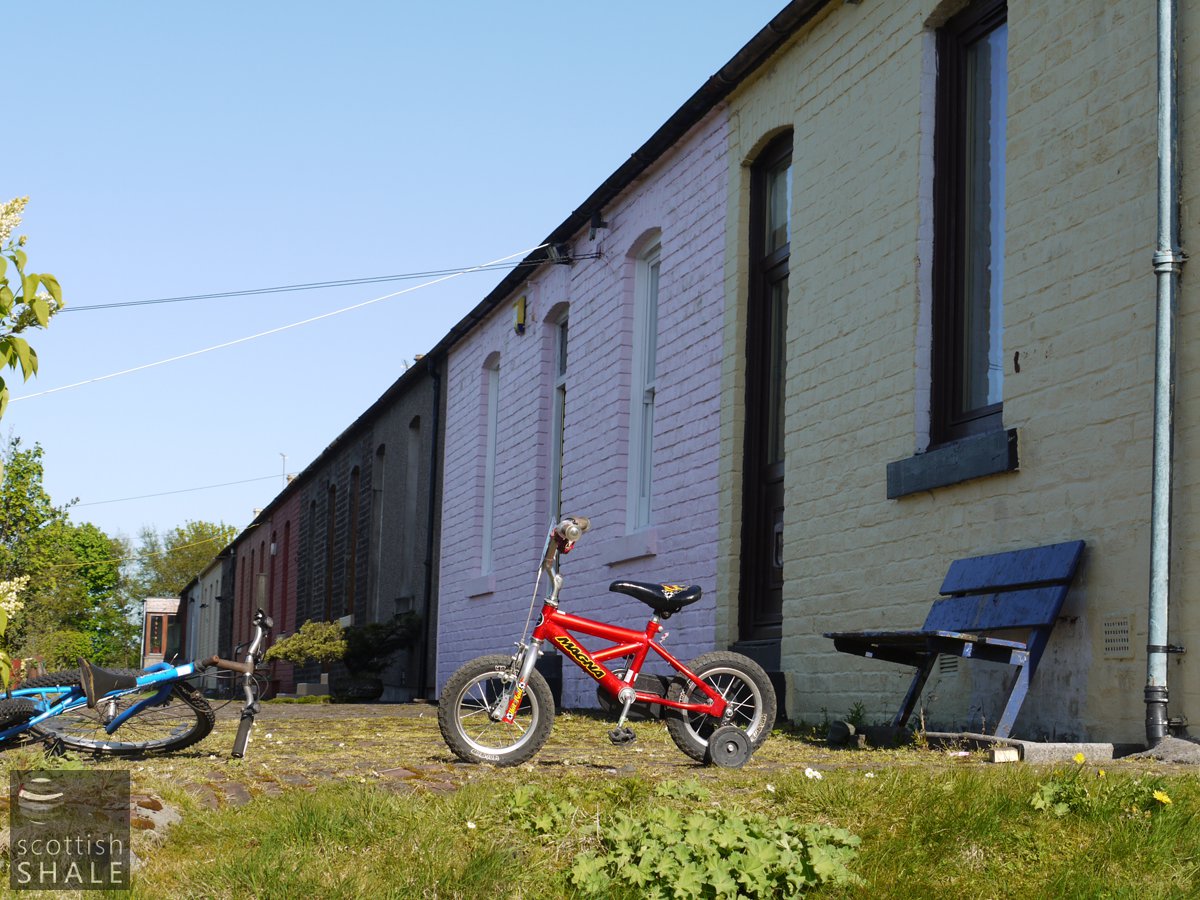
Faraday Place, Addiewell, 30 April 2011
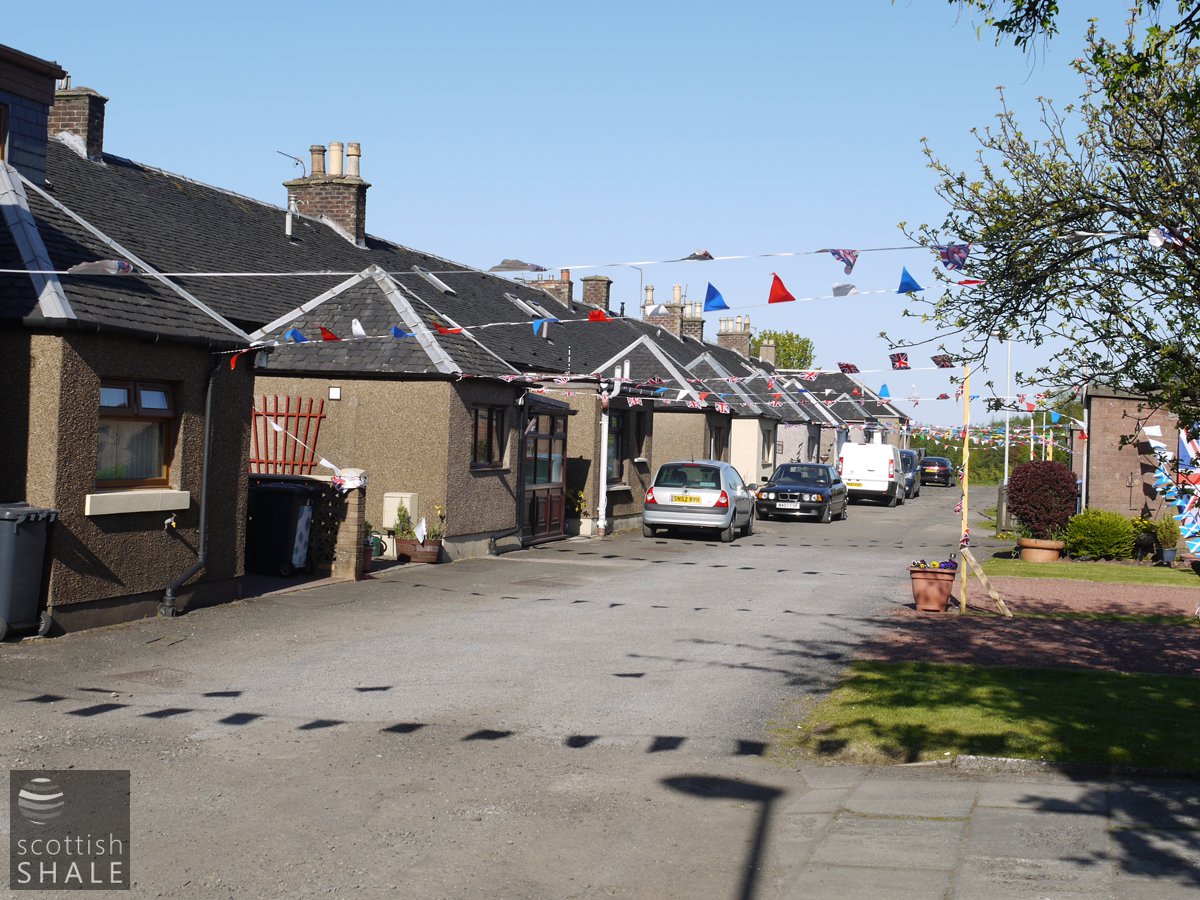
Faraday Place, Addiewell, 30 April 2011
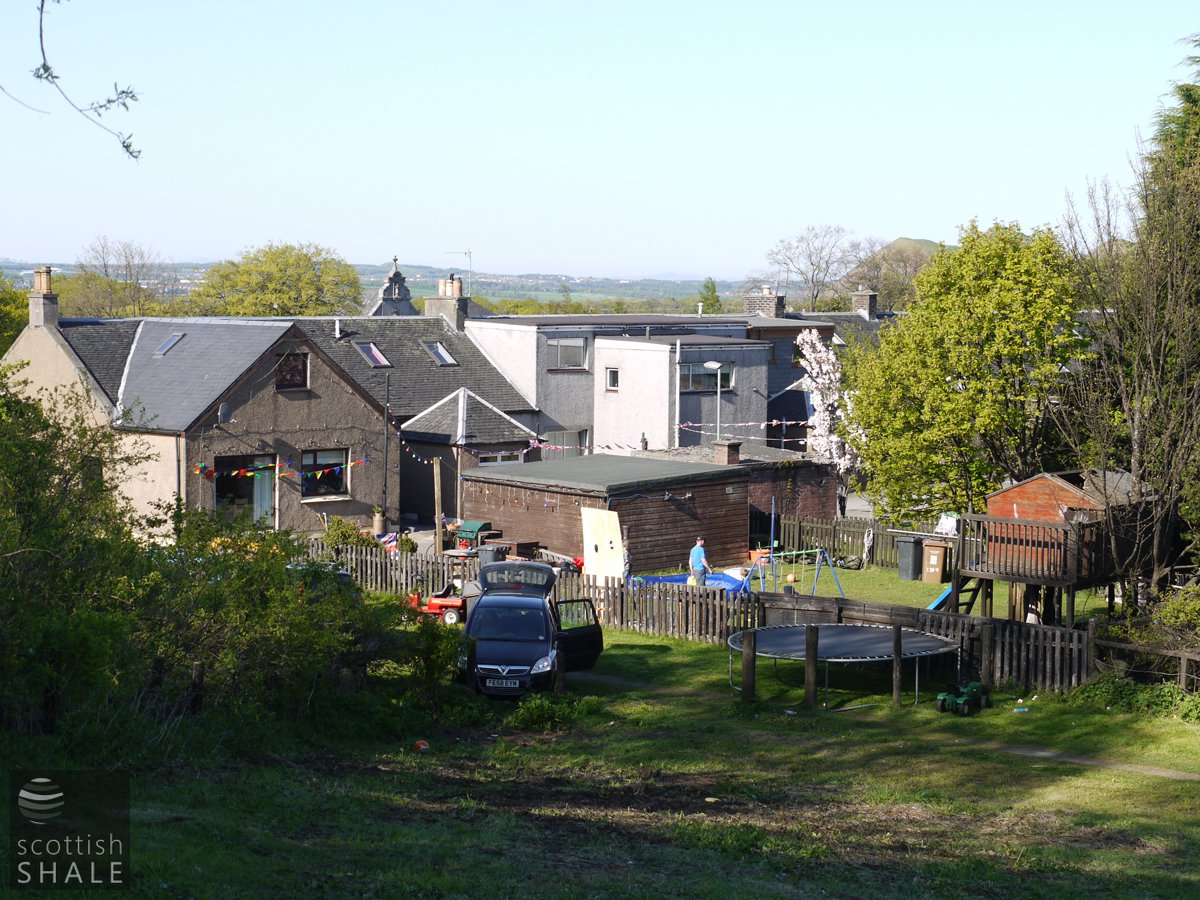
Faraday Place, Addiewell, 30 April 2011
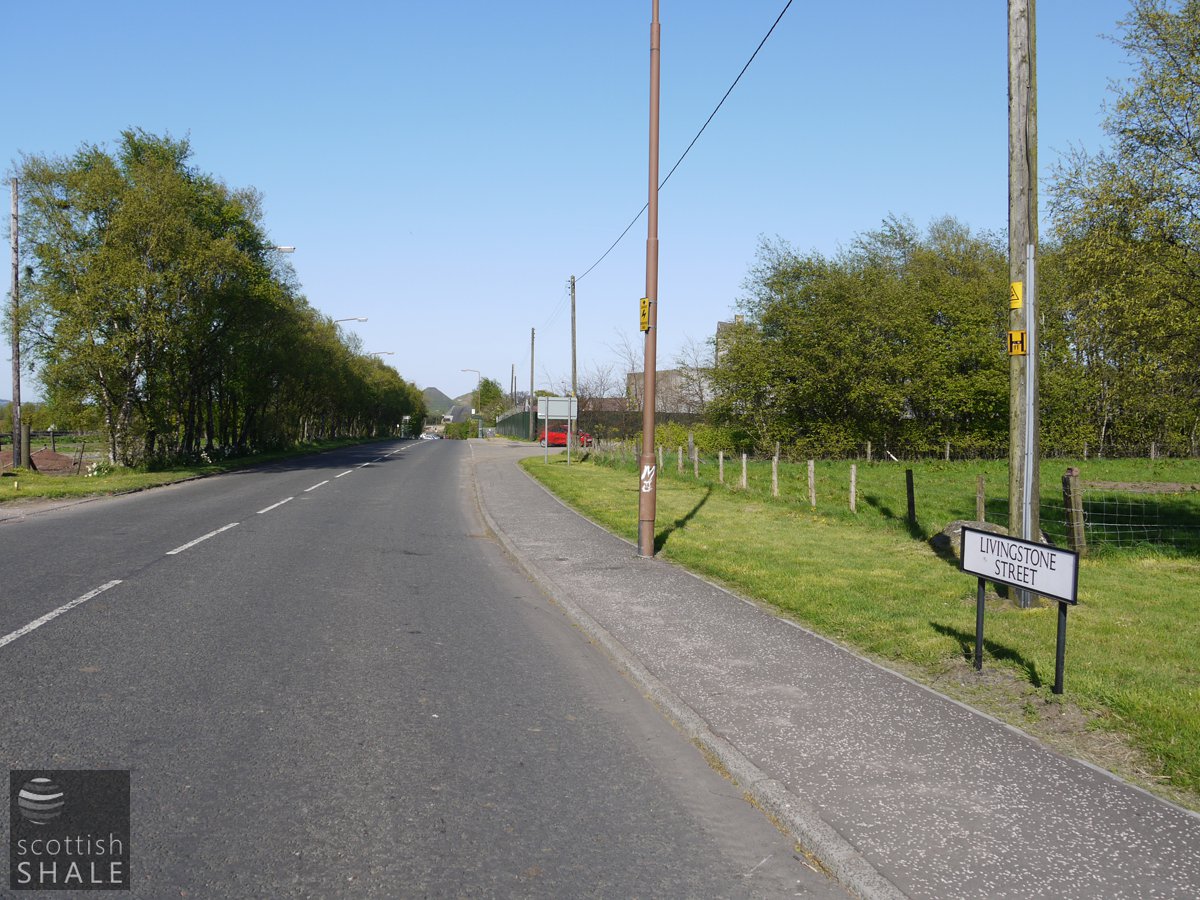
Addiewell, 30 April 2011
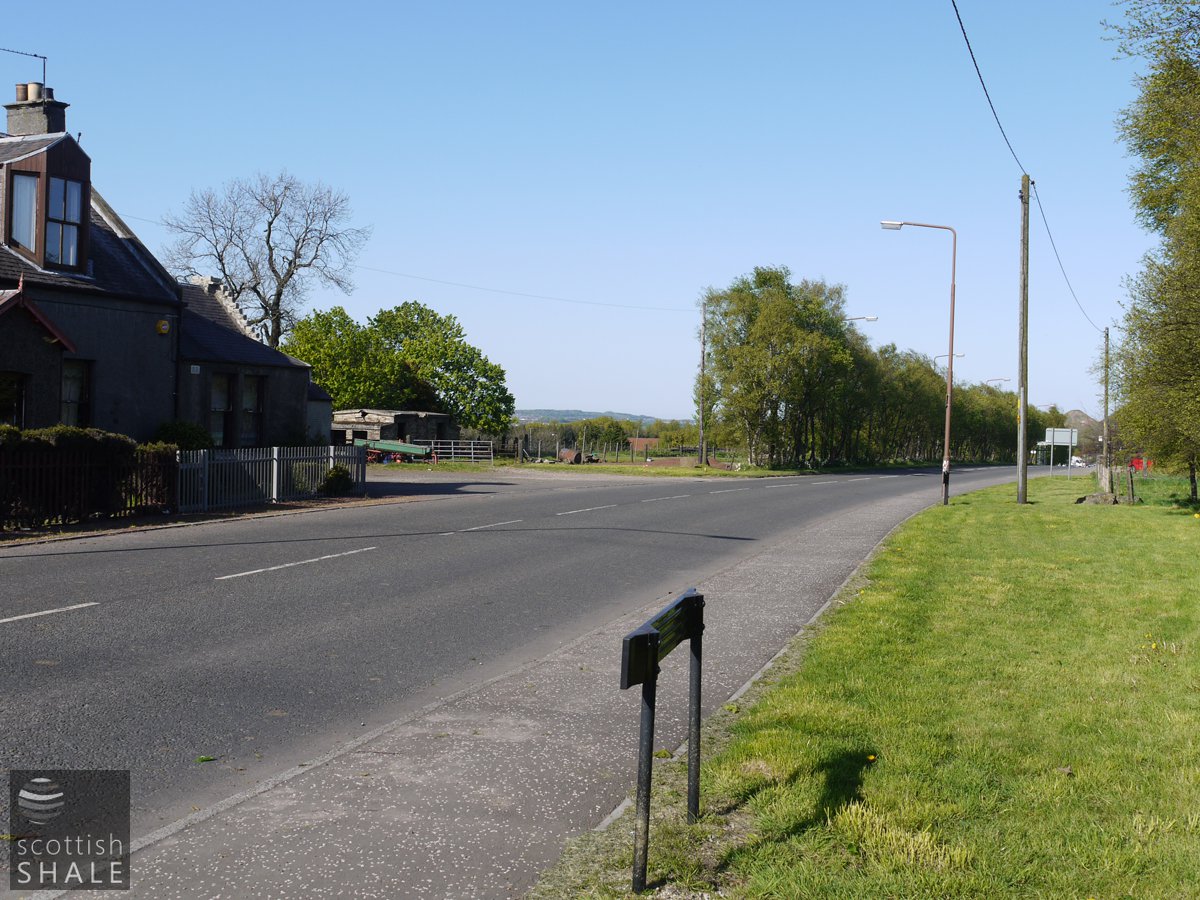
Addiewell, 30 April 2011
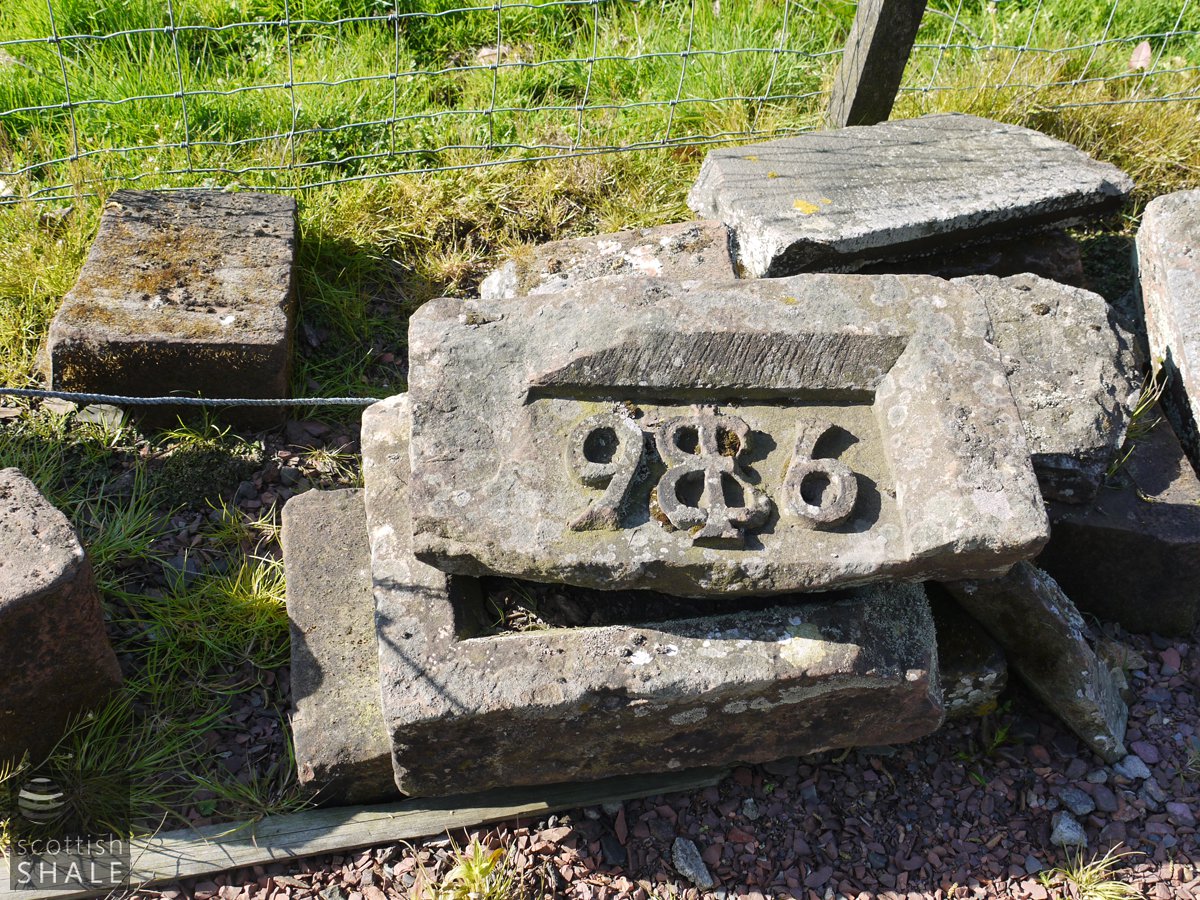
Addiewell, 30 April 2011
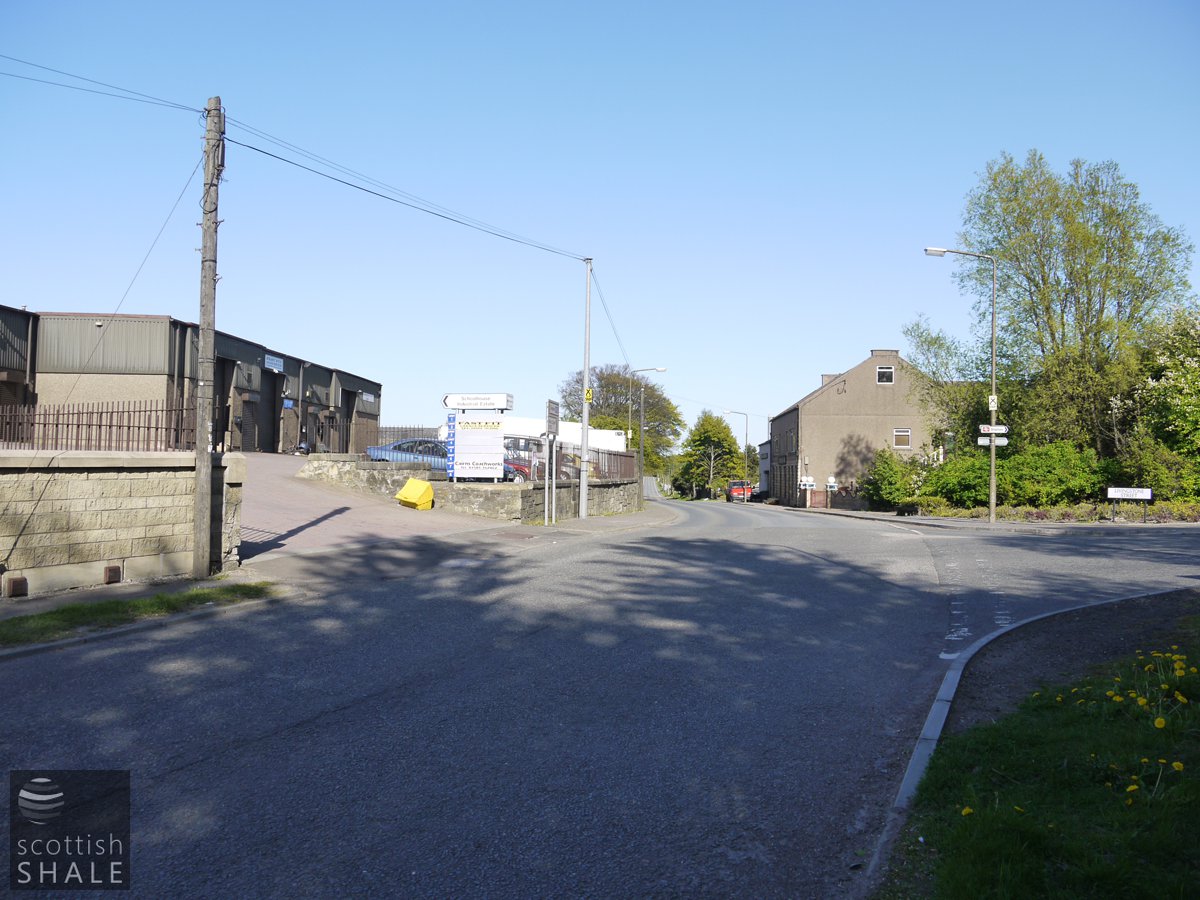
Addiewell, 30 April 2011
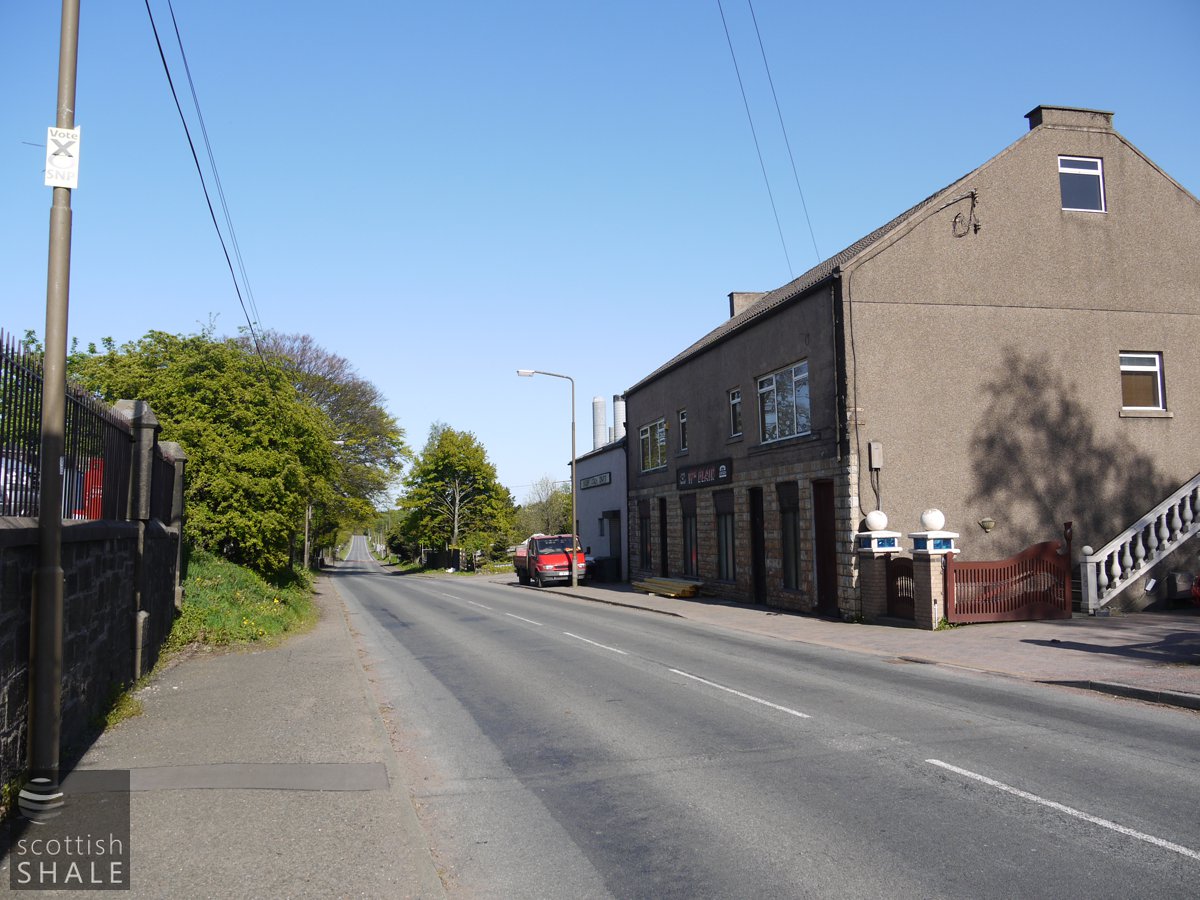
Addiewell, 30 April 2011
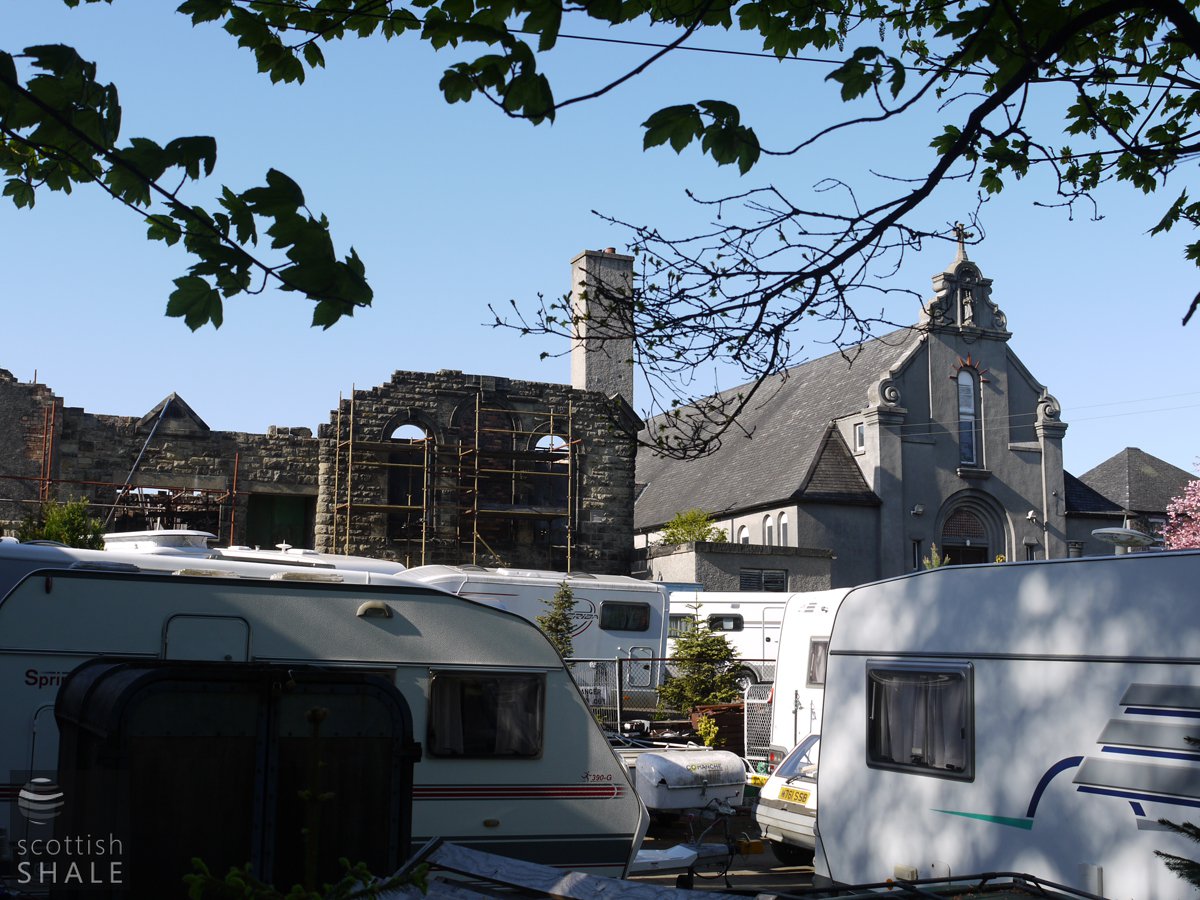
Addiewell, 30 April 2011
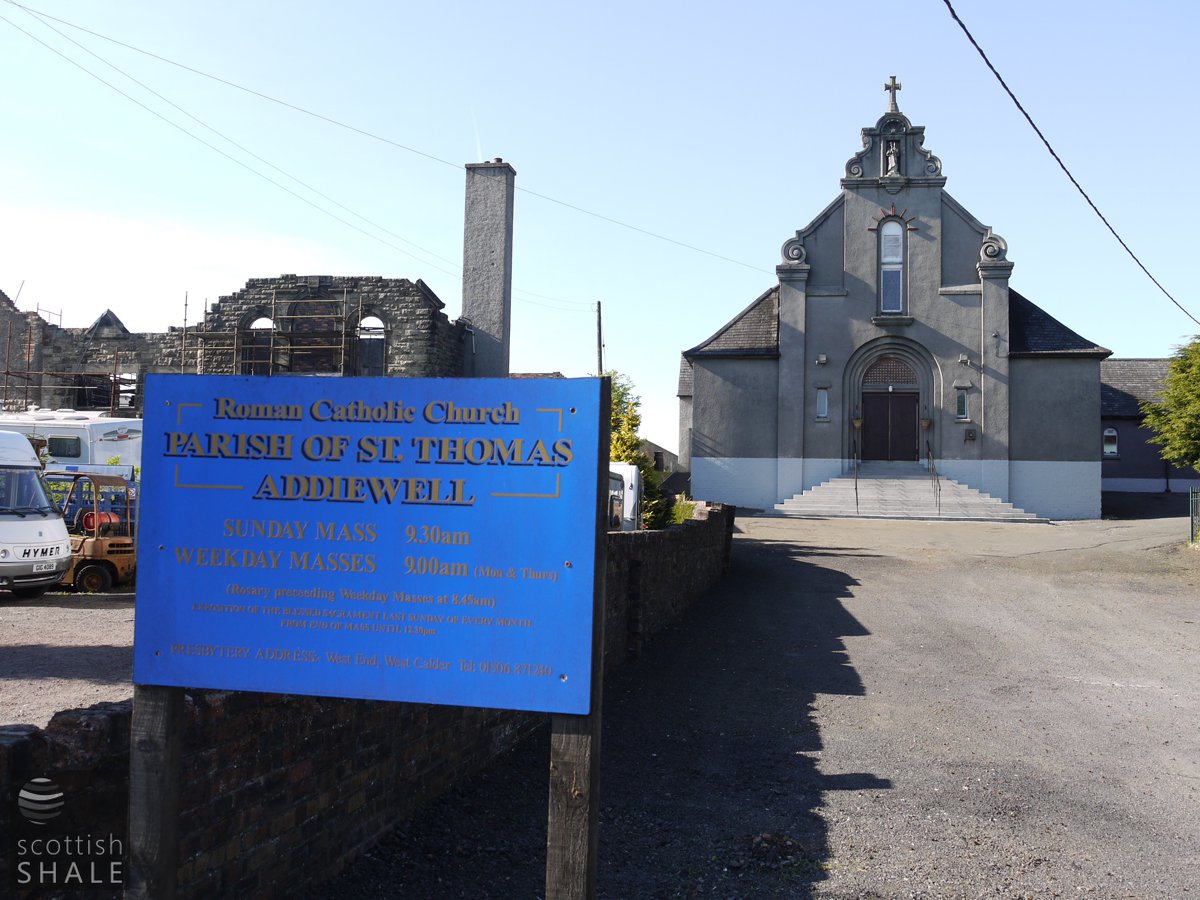
Addiewell, 30 April 2011
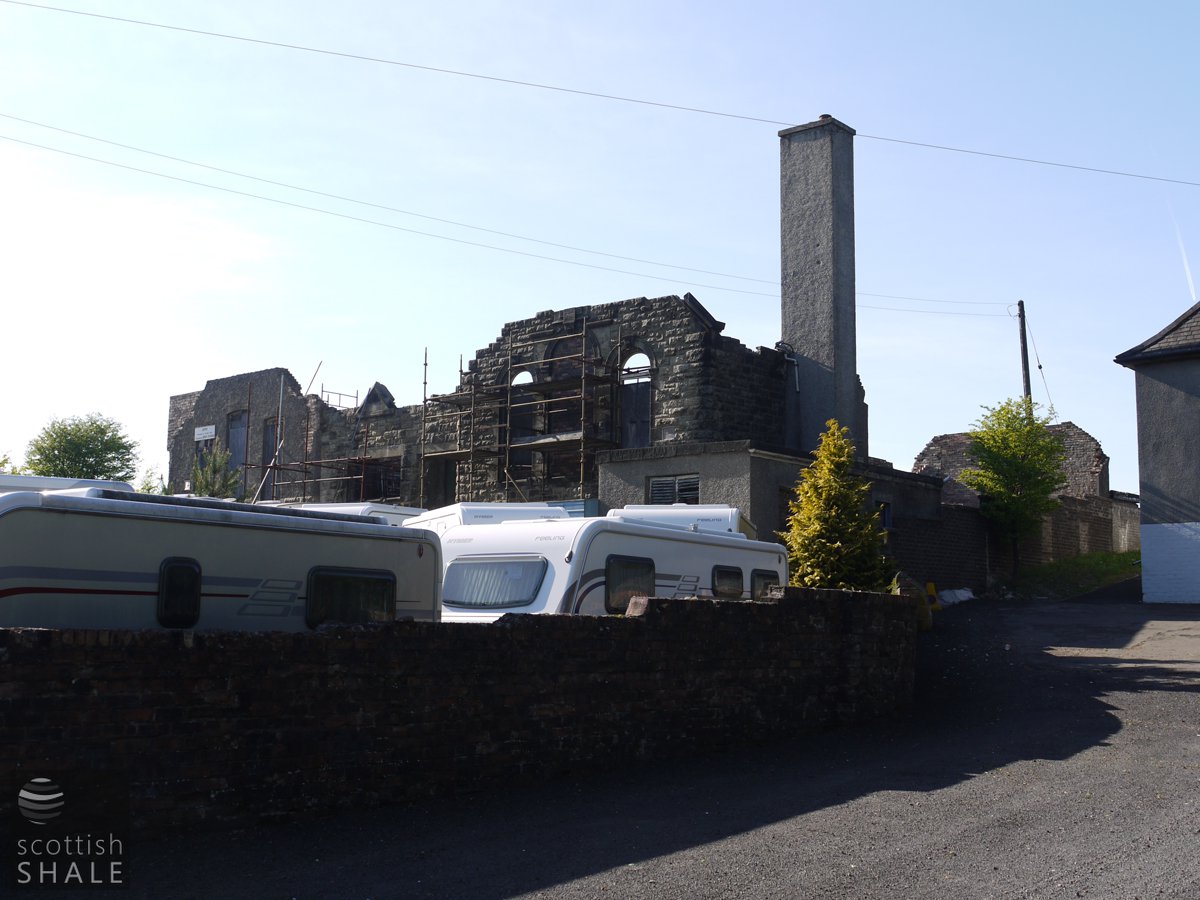
Addiewell, 30 April 2011
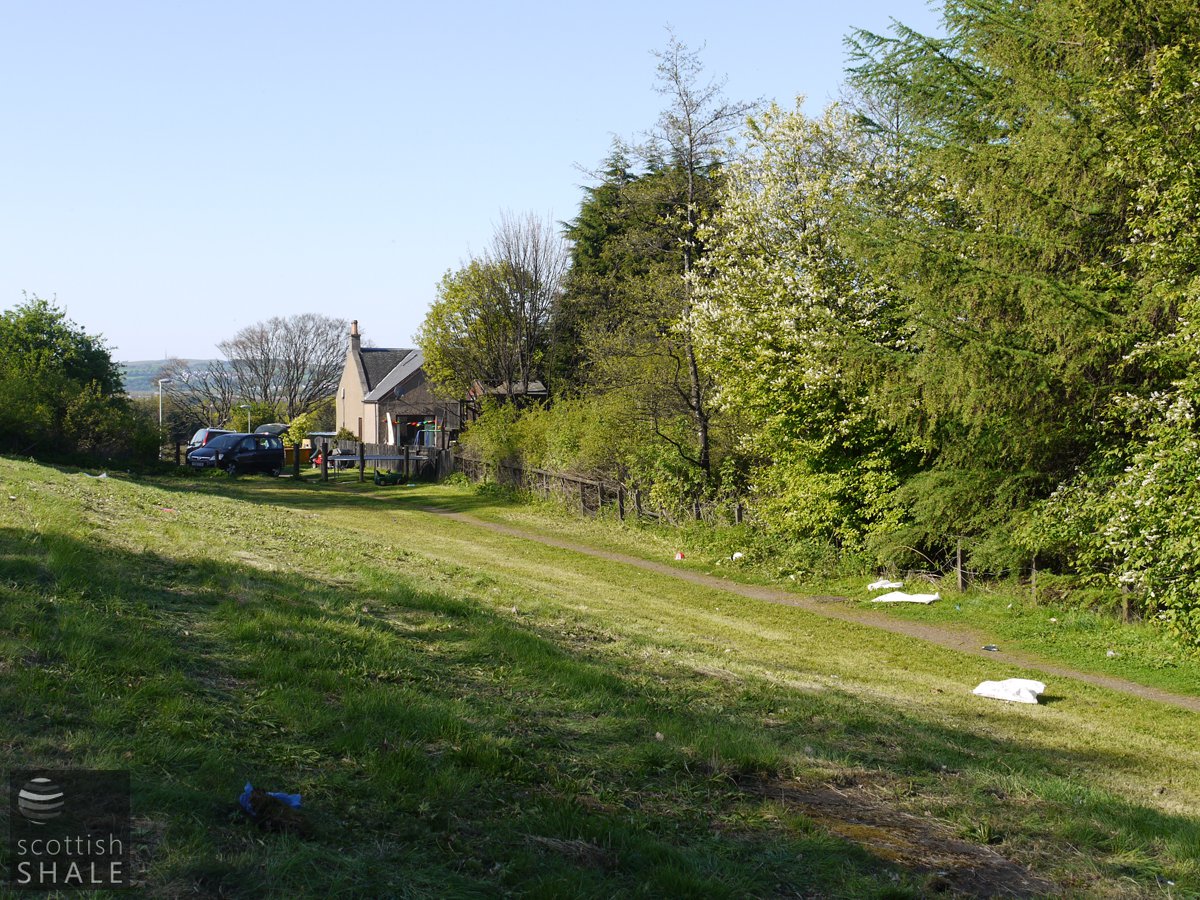
Addiewell, 30 April 2011
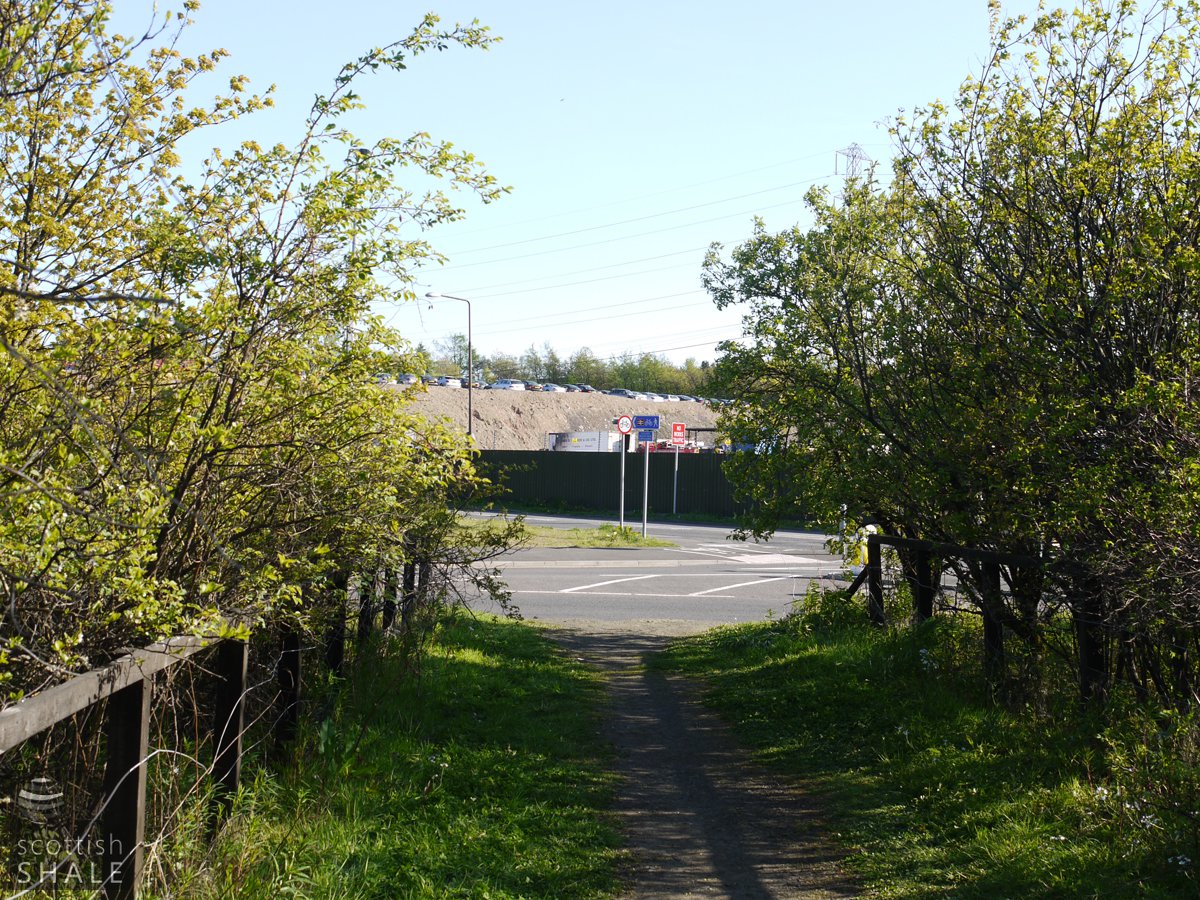
Addiewell, 30 April 2011
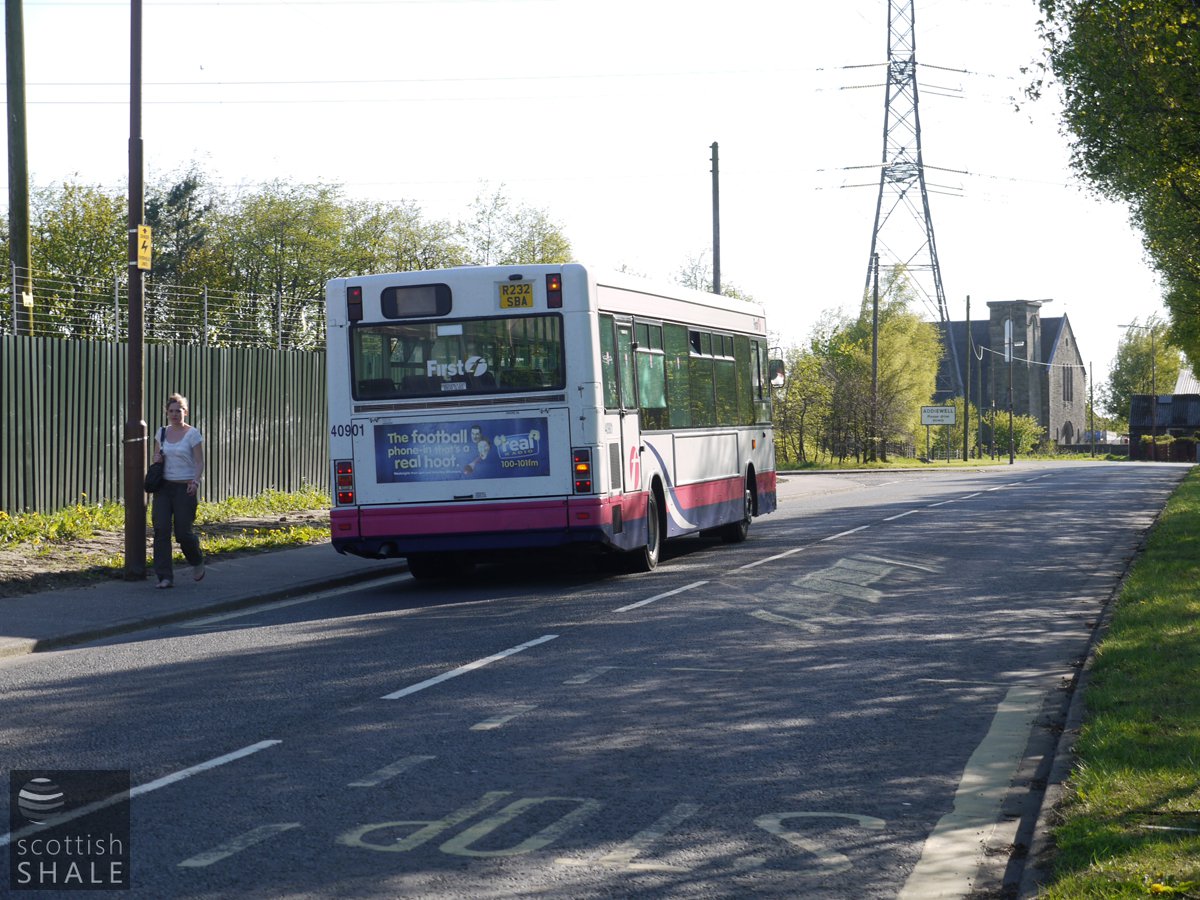
Addiewell, 30 April 2011
From West Calder, though little more than a mile distant, Addiewell differs very much in character. Its houses are all of the well known mining type, ranged in some ten or eleven streets, every street containing on each side between twenty and thirty houses, and enclosing an area of unpaved ground about forty yards in breadth. At one place the uniformity of the buildings has been broken in upon by the erection of an iron structure for the use of a Free Church congregation; in another quarter there is a sufficiently commodious Roman Catholic chapel; and the village also possesses a Working Men's Institute, which has meantime been pressed into the service of the Established Church.
The Falkirk Herald, 22nd November 1877 reporting on the murder of James Pattison. See full record
.......
Addiewell is a little mining village near West Calder. Its name doubtless derived from the fact that at one time or other there was a mineral well or something of that sort used in the neighborhood. But, alas ! No more is it used. Today Addiewell is a miniature hell of slums owned by a Company. The houses, roadways, halls, and land, not to speak of the people, are owned and controlled by Young's Company, Ltd.
In Addiewell there are over 300 houses insanitary and totally inadequate to admit of the workers lead a home life compatible with decency and religion. Fifty of the houses are what are known as "high-ends," where health and morality have a hard struggle for existence. There is still in force "open privies" here. The odour emanating from these cesspools of disease is anything but the perfume of roses. Moreover, the privies are built quite close to the houses, from which it can be understood that much of the hellish smell emanating from them must penetrate into the houses, this infesting them with the germs of disease.
Is it any wonder that fevers and epidemics of disease are prevalent in Addiewell? It is simply impossible to be healthy living in such insanitary conditions.... In Addiewell there are close on 1200 people. For lavatory and sanitary accommodation Young's Company Ltd., have supplied them with 12 – there may be more - "open privies," in which all excrement and refuse are deposited. There this filth lies until the "privy" is full, when it is filled into open carts and taken away. Quite recently we had sanitary regulations for the proper housing of swine. Yet in Addiewell, and in the other houses owned by the Company of Christian(?) shareholders, the conditions of life are so insanitary and so conducive to irreligion and immorality that Society, for its own safety, ought to see to their abolition at once The houses are without architectural feature whatever. Built of brick, which had become black with the fumes of the works, they look like so many rows of prison cells which had been dumped down anywhere.
The household washing has to be done in the houses, Young's Company Ltd. evidently thinking that if they provided washhouses the people would not know how to use them. Water for domestic use and for drinking purposes has to be carried in pails from pumps, of which there were two in each street. To the woman upstairs who has a big household to look after, this means a great amount of inconvenience and hard labour that could be quite well done without. What is to hinder Young's Company Ltd., from installing a separate water supply in each house for the private use of the occupants.
"Forward" the socialist newspaper. c.1910.
Further archive images
- 143202 - Disposition - No. 11 Faraday Place, Addiewell. - Copy Disposition by Young's Paraffin Light and Mineral Oil Company Limited in favour of Gordon Cramb of No. 11 Faraday Place, Addiewell signed by W. Peutherer, Director, Young's Paraffin Light and Mineral Oil Company Limited dated 27 August 1964. The plan attached shows the property edged Red and common accesses coloured Brown.
- 143203 - Disposition - No. 12 Faraday Place, Addiewell. - Copy Disposition by Young's Paraffin Light and Mineral Oil Company Limited in favour of Huge McQueen of No. 12 Faraday Place, Addiewell signed by W. Peutherer, Director, Young's Paraffin Light and Mineral Oil Company Limited dated 27 August 1964. The plan attached shows the property edged Red and common accesses coloured Brown. There is also a plan naming the owners of 1 - 13 Faraday Place and the price paid for each property.
- 143204 - Disposition - No. 13 Faraday Place, Addiewell - Copy Disposition by Young's Paraffin Light and Mineral Oil Company Limited in favour of James Maxwell of No. 13 Faraday Place, Addiewell signed by W. Peutherer, Director, Young's Paraffin Light and Mineral Oil Company Limited dated 23 September 1963. The plan attached shows the property edged Red and common accesses coloured Brown.
- 217160 - Feu Disposition of Ground at Addiewell 1880 - Feu Disposition of Ground at Addiewell by James Young, Esquire; in favour of Young's Paraffin Light & Mineral Oil Company Limited; dated 13th January 1880. Includes a plan depicting the area highlighted in red.



